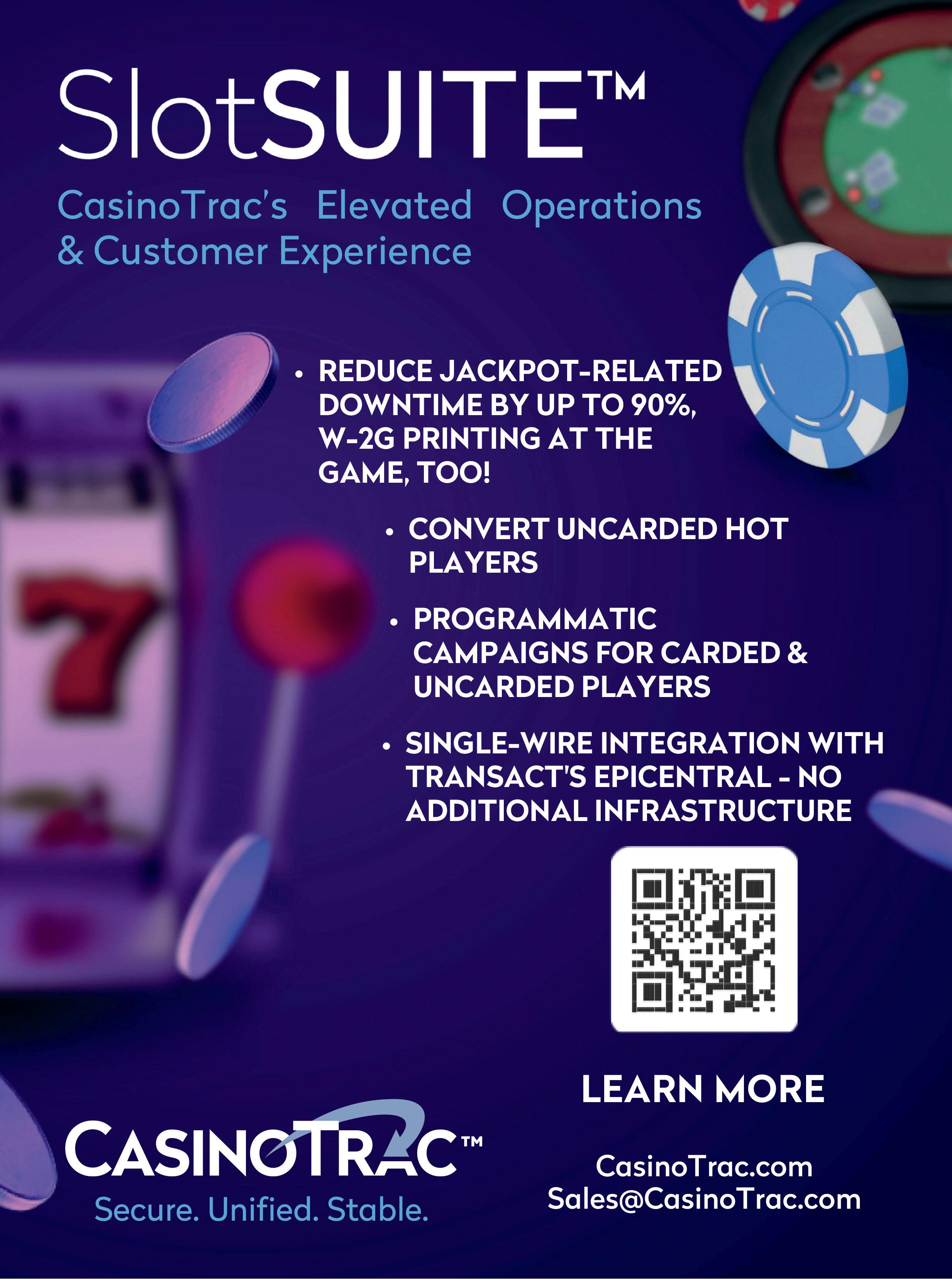





























Gaming America explores how casinos can appeal to today's generation through marketing and creating new experiences


IGA REVIEW: We provide a rundown from the Tribal tradeshow in Anaheim, California
LIVE AND KICKING: Live! Casinos' Ryan Eller tells us about the company's Maryland casino
VIEWPOINTS: How is AI benefiting the gaming industry now, and how will it in the future?



















COO, EDITOR IN CHIEF
Julian Perry
CONTRIBUTING EDITOR
Tim Poole
STAFF WRITERS
Laura Mack, Brian Joseph, Kirk Geller, Beth Turner, Ciaran McLoughlin, Will Underwood
LEAD DESIGNER
Olesya Adamska
DESIGNERS
Claudia Astorino, Callum Flett, Gabriela Baleva
DESIGN INTERN Medina Mammadkhanova
ILLUSTRATOR Maria Yanchovichina
MARKETING & EVENTS MANAGER
Mariya Savova
FINANCE AND ADMINISTRATION ASSISTANT
Dhruvika Patel
PUBLICATION ASSISTANT
Rachel Worth
IT MANAGER
Tom Powling
COMMERCIAL DIRECTOR
Deepak Malkani Deepak@playerspublishing.com Tel: +44 (0)207 729 6279
SENIOR U.S. BUSINESS DEVELOPMENT MANAGER
Aaron Harvey Aaron.Harvey@playerspublishing.com Tel: +1 702 425 7818
SENIOR ACCOUNT MANAGER
Michael Juqula
Michael.Juqula@gamblinginsider.com Tel: +44 (0)203 487 0498
ACCOUNT MANAGERS
William Aderele
William.Aderele@gamblinginsider.com Tel: +44 (0)207 739 2062
Irina Litvinova
Irina.Litvinova@gamblinginsider.com Tel: +44 (0)207 613 5863
Serena Kwong
Serena.Kwong@gamblinginsider.com Tel: +44 (0)203 435 5628
Max NGarry
Max.Ngarry@ gamblinginsider.com Tel: +44 (0) 207 7290643
CREDIT MANAGER Rachel Voit
WITH THANKS TO: Churchill Downs, the Indian Gaming Association, Andre Carrier, John Connelly, Jeannie Hovland, Oliver Lovat, Ryan Eller, Martin Stålros, Eddie Hall, Stephen Crystal, Steve Bright, Paolo Personeni, Ben Sutherland, Galaxy Gaming, IGT, Everi, Aristocrat.
Gaming America magazine ISSN 2632-766X

Five years ago, before the mass proliferation of social media we see today – and even before the Covid-19 pandemic – I think you would be hard pressed to find a CEO talking about “Instagrammable moments.” KPIs were all revenue and profit based, while a property’s appearance on guest social media feeds was nowhere near the top of the priority list.
Today, KPIs remain revenue and profit-based (well, more revenue than profit for online sportsbooks...), but a property’s focus on its social media appeal is something every CEO now thinks about, whether by choice or by job description. It was Mohegan CEO Ray Pineault who used the exact phrase ‘Instagrammable moments’ in a recent interview with us, but other executives have followed suit across the world.
Ryan Eller, EVP at Live! Casino & Hotel Maryland (operated by Cordish Companies), is another such exec who knows the value of a property’s appeal in today’s society. In an exclusive interview within this issue of Gaming America, he discusses the Maryland property’s ‘unique DNA’ and the growing need for regional properties to offer entertainment and experiences á la Las Vegas.
Sticking with our main theme of appealing to the modern player, or ‘Generation Next,’ our resident casino history expert Oliver Lovat provides his typically in-depth analysis on what properties across the US are doing today, and how the ‘fun economy’ is changing the requirements of today’s casino resorts.
Elsewhere in this edition, we bring you a thorough rundown of the main themes covered at April’s Indian Gaming Association tradeshow in California. Busy and educational as usual, Gaming America was in attendance as Tribal guests discussed everything from Shohei Ohtani to AI – and more AI. There really was a lot of focus on AI…
On that note, our traditional Viewpoints feature this issue is also focused on AI, as gaming companies talk us through how it is currently helpful, and how it may benefit the sector in the future.
There are, naturally, fears for job safety with the introduction of such drastically new and advanced technology. But the current consensus, for now at least, is that AI can reduce the need for humans to do the ‘boring’ jobs – manual data collection that requires little skill or creativity.
The ‘human touch,’ as Gaming America has written about before, remains critical to both casino design and casino operations. How long that continues to be the case, however, is anyone’s guess. You could try asking ChatGPT…
JULIAN PERRY, COO, Editor-in-Chief































8
HITTING THE JACKPOT
10
12








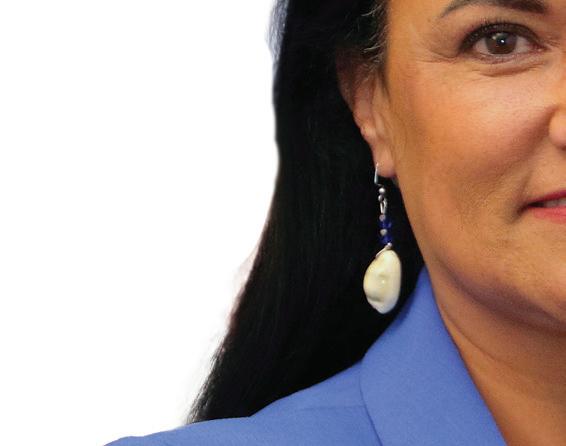


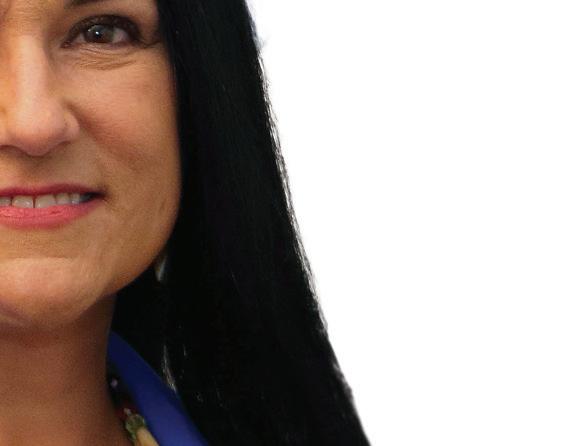




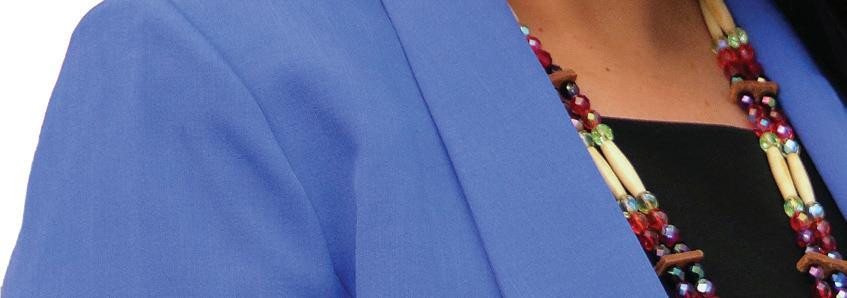

We look through some key facts and figures surrounding lottery in the US.
With New York getting closer and closer to legalizing online casinos, Gaming America looks back on some key gambling dates in the Empire State...
LOOKING AHEAD TO 2024’S CEREMONIES
After a decade of celebrating gaming’s best, Gaming America looks ahead to a bright 2024 for the Global Gaming Awards in the Americas and Asia-Pacific.
14 FROM THE TOP: IGA INSPIRED
Tribal gaming is a uniquely American institution, and all its uncommon attributes were on display this April at the Indian Gaming Tradeshow & Convention.
16 THE SEARCH TO FIND INDIANA’S BEST CASINO
Indiana casino faceoff: Terre Haute Casino Resort vs Harrah’s Hoosier Park Racing & Casino.
20 THE RESIDENTIAL EFFECT
We spoke with Andre Carrier about Eureka Casino Resort’s expansion.
22 B ACK TO THE DRAWING BOARD
Interblock Global CEO John Connelly discusses the company’s design philosophy and product development process.
24
At IGA, one topic seemed to be on everyone’s mind: AI and its potential impact on the gaming industry.
26 ONE SIZE DOESN’T FIT ALL
Gaming America caught up with Vice Chair of the NIGC Jeannie Hovland at the Indian Gaming Tradeshow & Convention.
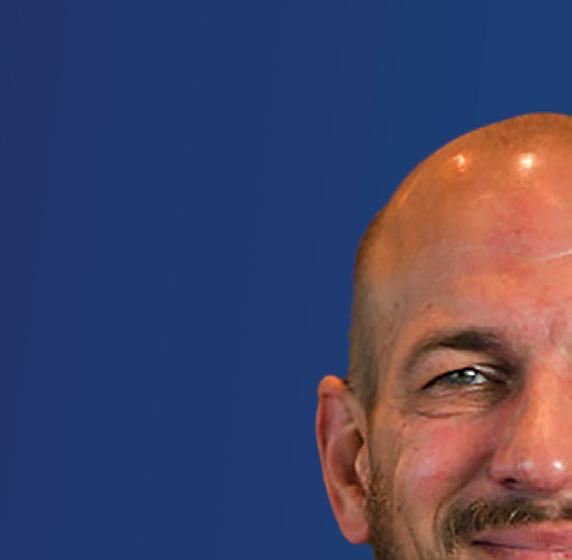



IGA: CALIFORNIA GAMING TRIBES FLEX THEIR MUSCLES
From the floor of the Indian Gaming Tradeshow and Convention, Gaming America covers conversations regarding Tribes and sports betting in California.
LOTS OF LESSONS AT IGA 2024
Reporting from the Indian Gaming Tradeshow and Convention, Gaming America discusses a variety of panel topics.
COVER FEATURE: GENERATION NEXT
Oliver Lovat dissects the new strategic dimension in hospitality development.
EVOLUTION OF THE REGIONAL MODEL
Ryan Eller speaks with Gaming America about the impact of Las Vegas on regional US casino models and the importance of creating experiences.



48
Gaming America speaks to RLX Gaming’s new CEO Martin Stålros about the company’s entry into the US in late 2023.
50
We explore whether smaller online poker brands are getting lost among big gaming corporations.
54
60
VIEWPOINTS: AI IN THE CARDS
Industry experts answer Gaming America’s burning questions on all things related to AI in the casino industry, including SCCG Management, NIGC, OPTX and Sportradar.
CEO Ben Sutherland talks the past, present and future of Greentube US.
62 PRODUCT REVIEWS
Gaming America reviews the latest offerings on the casino floor.
Despite being a traditional form of gambling, lottery continues to grow in the US, especially as technology allows it to be accessed in more ways. Here, we look through some key facts and gures surrounding lottery in the US.
The Oregon Lo�ery offered Dra�Kings Sportsbook-themed bets tailored for Taylor Swi� fans ahead of Super Bowl LVIII.










Despite being a leader in gaming revenue in the US, the Nevada State Cons�tu�on does not allow the sale of statewide or mul�-state lottery tickets.




The Texas Lo�ery and Texas Motor Speedway partnered in March 2024 to launch a new $5 scratch game with a top prize of $100,000.


In March 2024, Inspired Entertainment released its virtual NFLA lo�ery product called End Zone Cash, featuring NFL Alumni players, in collabora�on with the Pennsylvania Lo�ery.
In March 2024, the Alabama Senate advanced a gambling proposal which would allow state lo�ery and electronic wagering machines to be operated at several loca�ons





In January 2024, Jackpocket became the first lo�ery pla�orm in US history to enter the online casino space a�er partnering with Caesars Interac�ve Gaming New Jersey to launch Jackpocket Casino in New Jersey.
in the state.











of official state lo�ery �ckets online, launched in Arkansas in March 2024, marking the fifth state in which the brand has launched.


During the 2023 fiscal year, the North Carolina Educa�on Lo�ery raised more than $1bn for public educa�on in the state for the first �me in its history.






In October 2023, Scien�fic Games, in partnership with the Delaware Lottery, released the Delaware Lottery Player Club loyalty program and mobile app.



With New York getting closer and closer to legalizing online casinos, Gaming America looks back on some key gambling dates in the Empire State...
























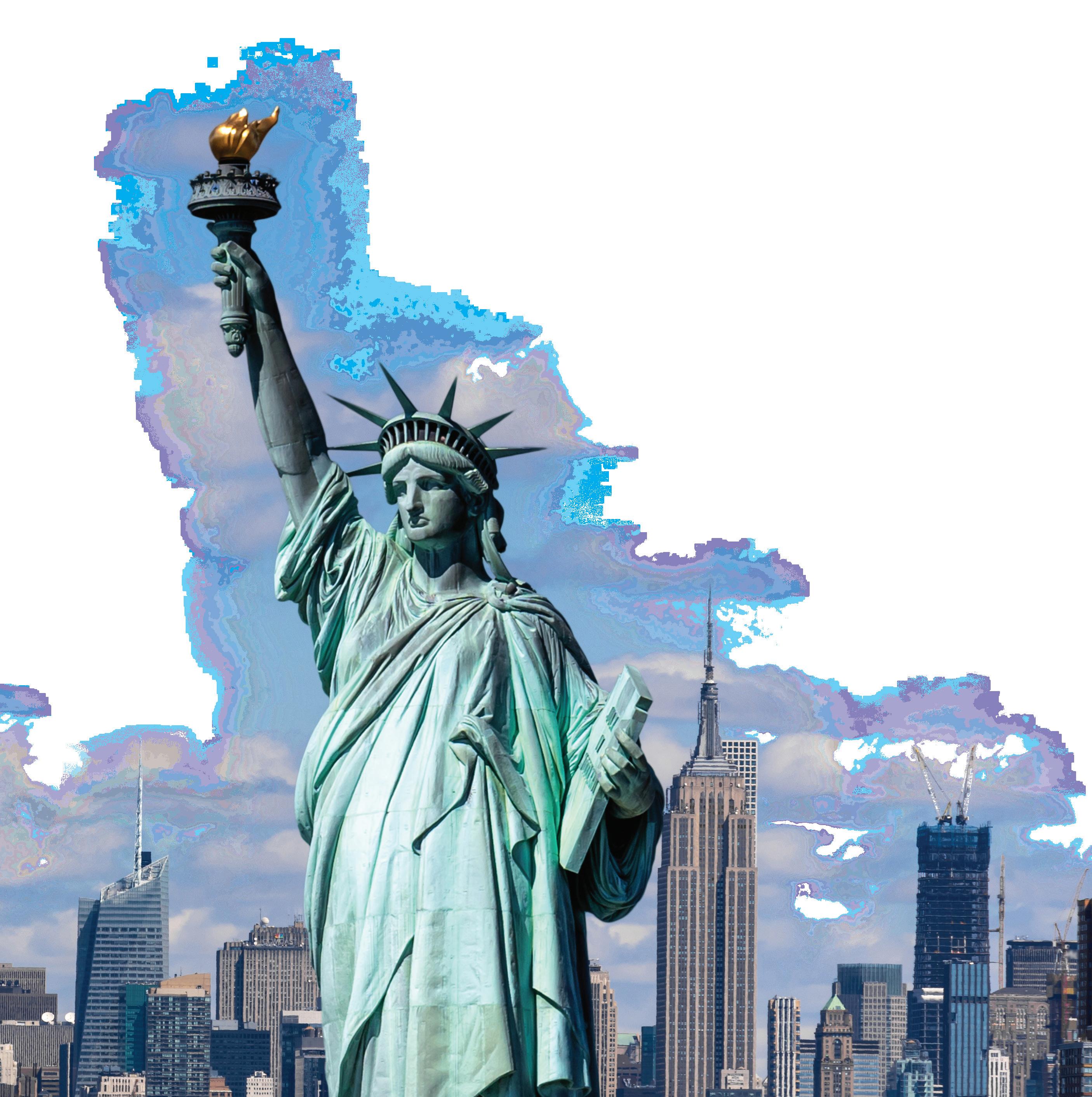




only debuted in the last two years, the Global Gaming Awards Asia-Pacific have already grown to become one of the most recognizable shows for all competitors in the Asia-Pacific region. As executives and leaders of these companies continue to see the success of the Awards in the US, it creates a sense of urgency to be recognized in all aspects of their business.






executives and leaders yet for many different Awards categories. Savova comments,

With the Shortlist finalized and voting commenced, companies will gather to see which of the nominations are celebrated in Manila this year. Savova believes this year could be one of the closest contests yet for many different Awards categories. Savova comments, “With Macau returning to form post-pandemic, Singapore continuing to break records and the Philippines emerging as one of the fastest-growing and attractive markets in the region, the competition for the 2024 Global Gaming Awards Asia-Pacific is fierce across both operator and supplier categories. Our entire team is excited to finally celebrate with APAC’s strongest performers in-person on June 4. This event will be a huge milestone for our company.”
The winners included in the Global Gaming Awards Asia-Pacific will be announced at an afternoon ceremony where many of the nominees will be in attendance.
The Global Gaming Awards Americas will take place at the Venetian Resort Las Vegas and gather the industry’s elite to celebrate the success of the past year. Particularly competitive will be the Land-








in North America leads the way. Some of the biggest companies in the industry are based there, the land-based sector continues to push the boundaries of exceptional customer experience and innovation, while the digital sector in the US is undoubtedly what everyone talks about, even in Europe.

Based Operator of the year category, which rewards the company that goes above and beyond to create the best possible customer experience, while Digital Operator of the year recognizes who has driven the rapidly evolving online gaming industry to new heights.
The award for North American Property of the Year celebrates which estate pushed the boundaries of customer experience in the land-based sector, with Circa seeing particular succcess here in recent years. These Awards represent the very best of what American gaming has to offer and any company nominated showcases the highest tier of business in each respective category.




As Savova explains, “The gaming industry


the biggest companies in the industry are based there, the land-based sector continues to push the innovation, while the is undoubtedly what and harder every
10 companies to Global Gaming Awards companies that 100% deserve we try our best to recognize the best of
“That being said, it gets harder and harder every year to pick just 10 companies to be shortlisted in each category for the Global Gaming Awards Americas. There are so many companies that 100% deserve recognition but sadly we cannot shortlist everyone. Nevertheless, we try our best to recognize the best of the best, which is why all companies are shortlisted as a result of their achievements in the Americas over the past 12 months.”
In 2023, companies such as Aristocrat, Wynn Resorts, FanDuel, MGM Resorts and Circa all left as winners from the Bellini Ballroom in the Venetian. It remains to be seen which operators and suppliers will the standouts of 2024, but with anticipation building for both the Global Gaming Awards Americas and Asia-Pacific, Gaming America and Gambling Insider are once again proud to power the industry’s most prestigious Awards.

















Tribal gaming is a uniquely American institution and all its uncommon attributes were on display this April at the Indian Gaming Tradeshow & Convention in Anaheim, California.
If you haven’t had much exposure to Tribal gaming, there really is nothing else like it in the gambling industry. It mixes the elements of the industry we all know – ringing slot machines, concerns about cage security – with vast and varied Native American traditions that stretch back untold years to create something that is entirely its own,
with its own customs, norms and, quite frankly, vibe. It’s this intermingling of Tribal customs and modern gaming industry practices that leads to properties like the San Manuel Band of Mission Indians’ gleaming 290,000-square-foot gaming facility in Southern California named Yaamava’, the


Serrano word for the season of spring. At the annual tradeshow (in Anaheim that will return to San Diego next year), put on by the Indian Gaming Association, the exhibit hall is a fascinating mash-up of traditional gambling convention fare – towering video screens, flashing lights, booths hawking casino furniture and security systems – with vendors and ceremonies you’d expect to see at a community event celebrating diversity and different cultures.
“ATTENDING IGA, YOU COULD SENSE THE DEEP PRIDE ATTENDEES HAVE IN THEIR TRIBAL GAMING OPERATIONS, HOW HARD THEY’VE FOUGHT TO HAVE THOSE FACILITIES BUILT AND HOW THEY’RE SET UP TO PROVIDE FOR NOT JUST THIS GENERATION BUT GENERATIONS TO COME . ”
This year in the exhibit hall, just down the row from a big slot machine manufacturer, you could spot tables selling intricate, handmade jewelry of sterling silver and turquoise, which are popular with conference attendees. National Indian Gaming Commission Vice Chairwoman Jeannie Hovland, who attended the conference and sat for an interview with Gaming America, told us one morning she was eager to browse the tables and shops.
A particular vendor sold t-shirts that took familiar fantasy characters but gave them a Native American twist. One shirt




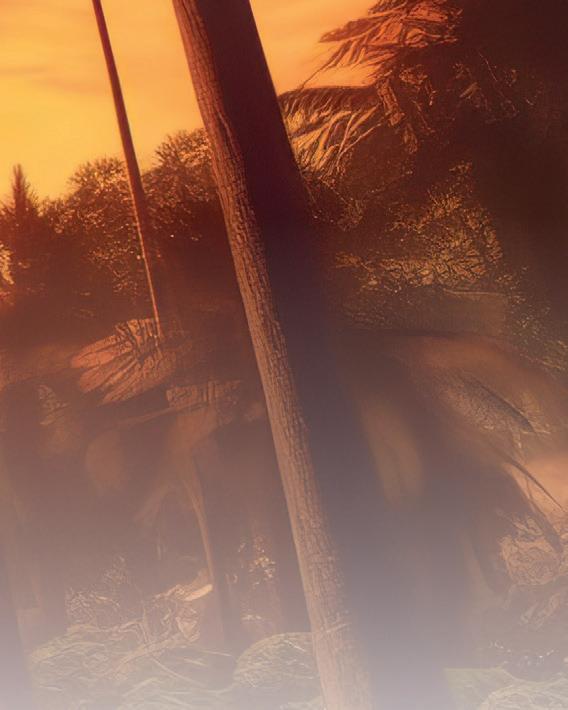

portrayed the animated character Pikachu as “Chiefachu” while another depicted Grogu, the “Baby Yoda” character from the Disney+ Star Wars shows The Mandalorian and The Book of Boba Fett, in an Indian headdress or feathered war bonnet. A couple of mornings, while wandering around before the convention action started, we stumbled upon the ballroom at the Anaheim Convention Center where it appeared Tribal elders performed a special ceremony of some kind.
It clearly was a private event, so we didn’t think it was appropriate for us to stick around and watch. But just catching a glimpse of it gave the proceedings of the day a different feel, more solemn and meaningful.
And that, of course, is the core difference between traditional commercial gaming in America and Tribal gaming. Native American Tribes, suppressed over the centuries by colonizers, view gaming as their pathway to not only prosperity but to protecting their way of life.

Given the atrocities Native Americans have endured, it is no wonder that despite their success in the gaming industry, which was on full display at the conference, with attendees walking around sporting craved, wooden jewelry and ornate, large-brimmed hats matched with designer clothing, some were still, shall we say, less than pleased. In one panel, for example, the organizer of the conference, Victor Rocha, complained that media coverage around Los Angeles Dodgers Shohei Ohtani’s interpreter, who is accused of stealing money to pay gambling debts, was skewed against California’s gaming Tribes, who blocked the legalization of sports betting in the state in 2022.
Rocha said the subtext of the coverage was that, if the Tribes had allowed for the legalization of sports betting, “this would have never happened.” That might be a bit of an overstatement, but it’s also understandable that if your people have
been under attack for centuries you might see hints of opposition and derision everywhere.
To us, Rocha’s comment underscored the uniqueness of Tribal gaming as an institution, where talk of Tribal sovereignty is just as common as casino-floor management. That was perhaps the biggest takeaway we got from IGA this year; the extent to which gaming has become woven into the very fabric of Native American culture. American Tribes, rightfully, worry a great deal about their autonomy and are quick to assert that they should be treated on equal footing with state and even federal government agencies.
But, thanks to the way they’ve been treated historically in the US, their sovereign lands are often way out geographically, offering Tribal members little in the way of economic opportunity. Gaming, over the last several decades, has become the panacea for American Tribes, leading them out of poverty and giving them the financial wherewithal to finally assert their authority in ways big and small.
Attending IGA, you could sense the deep pride attendees have in their Tribal gaming operations, how hard they’ve fought to have those facilities built and how they’re set up to provide for not just this generation but generations to come. At its core, the Indian Gaming Tradeshow & Convention is a gaming conference, like G2E. You go there to see the latest offerings from Aristrocrat, Light & Wonder and Interblock, to mingle with old friends and catch up on gossip, maybe learn about a new security system or cashless payment scheme.
It’s a tradeshow in every sense of the word. But, it’s also something more than that – a display of a people’s fight for their sovereignty, of their persistence in the face of obstacles, their pride and character and culture. Yeah, IGA represents commerce, one of the most American values. But it also represents an inspiring, rags-to-riches story, a narrative that is also central to the American psyche.
Like we said, Tribal gaming is uniquely American.



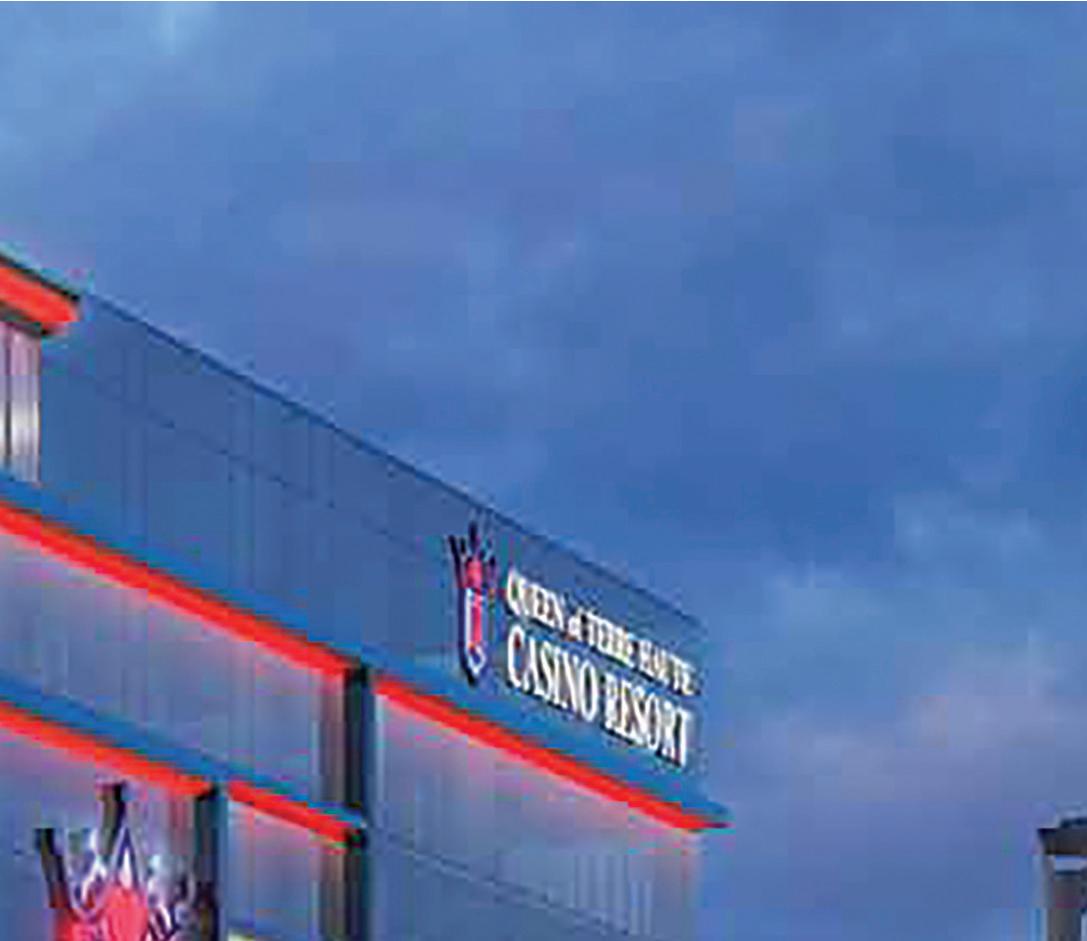



Terre Haute Casino Resort vs. Harrah’s Hoosier Park Racing & Casino, Gaming America's Laura Mack reviews each property.
Gaming America recently paid a visit to two Indiana casinos, one that recently opened and one that was recently updated. In this deep dive into what Terre Haute Casino Resort and Harrah’s Hoosier Park Racing & Casino have to offer, one must rise victorious in this casino match-up... When it comes to quality casinos in Indiana, Hoosiers have their pick of some great gambling spots, where they can kick back, relax and enjoy their game of choice. Indiana currently offers its
residents access to 13 casinos within its borders. Two of these, Terre Haute Casino Resort and Harrah’s Hoosier Park Racing & Casino, offer gaming experiences that rival what Las Vegas has to offer. So, let’s take a look at how these two square up in a casino faceoff... Gaming America recently visited the Hoosier State’s latest addition, Terre Haute Casino Resort, on opening day. The destination officially welcomed its first patrons on April 5 after a
public celebration and ribbon-cutting ceremony. Prior to the debut, the casino held a soft opening, which allowed select guests and staff to preview CDI’s newest entertainment destination. Terre Haute offers its guests 1,000 slot machines, 35 live table games, a sportsbook and a poker room within its 400,000 square feet of gaming space.
On the other hand, Harrah’s Hoosier Park Racing & Casino, which is owned and operated by Caesars Entertainment, now
sports an updated casino floor – plus additional dining features that are conveniently located near the action. Caesars recently wrapped up a project that brought the facelift to the site’s casino floor. The pricetag on the renovations totaled $40m, the largest investment on property updates that Caesars has spent since the company acquired the Madison County casino in 2018.
The development expanded Hoosier Park’s gaming and dining space. Other added features include new signage, updated lighting and new carpet throughout the gaming floor. Hoosier Park now houses more than 1,450 slot machines, 40 tables, a sportsbook and a high limit room, which has been expanded to offer high rollers access to more table games and a bar area. We will consider several categories for the coveted title of winner in this matchup, including cleanliness, dining, look and layout, variety of games and other amenities.
Let’s get right to it.
Terre Haute’s casino earns points based on several factors. This casino is smoke free, a benefit for nonsmokers but not so much for those who like to enjoy a cigarette during game play.
Smoking is permitted at Anderson’s Hoosier Park location. However, the Madison County location grabs points for its diligent effort to keep the casino floor clean and the ash trays empty. Hoosier Park scores again for the number of easily accessible hand sanitizing stations spread out on the casino floor.
This is something I do not remember seeing in Terre Haute’s casino. This was a close battle, but because it is smoke free, Terre Haute wins the category for the cleaner casino out of the two.
First point – THCR.
Complete with class casino carpeting and brilliant lighting – it brings Vegas to Indiana. This is a major plus because Vigo County residents, as well as those passing through, can have the look and feel of a Vegas Casino without having to travel cross country. This virtue earns THCR several points.
But the recent updates to Hoosier Park’s casino floor give it a modern look and feel. Caesars added features that include new signage, updated lighting and new carpet throughout the gaming floor. Hoosier Park also gains points for the open floor plan and wide aisles on the gaming floor, giving it the visual category win.
The score is tied, for now.
For the category of dining, Terre Haute emerged victorious based on several features. The first was variety and availability. The site has nine food and beverage options not far from the main gaming floor. Among those is Four Cornered Steakhouse, which is a regionally inspired restaurant, and the Altitude Bar and Lounge. Unfortunately, Hoosier Park’s dining options are limited if you plan to spend the majority of your time in the casino, as the site has one sit-down steakhouse located in the racing section.
Caesars added more dining options
on the casino floor as part of the recent update. Hoosier Park’s casino now offers players a Dash Café and Slice Pizzeria, both with reasonably priced menu items that include American cuisine staples like pizza, burgers, hot dogs, chili fries, deli favorites and breaded tenderloin sandwiches, which are a regional classic.
An individual meal does not have to break the bank with these dining options. One person can enjoy a satisfying meal for $8 to $15. Guests can also save money on drinks by taking advantage of the complimentary soda machine, located in the middle section of the casino floor.
The complimentary drink station near the food court had plenty of options as well, including tea, lemonade, diet and regular soda, along with ice water.
The restaurant section of the casino now includes a spacious sitting area, for those who might need a break between sessions. Caesars added space for several two and four-person tables along the windows.



However, these two restaurant options did not outweigh the larger selection Terre Haute’s casino had to offer. Two to one.
Another plus for Terre Haute was the location of its complimentary drink station, which is on the outer edge of the casino floor. This oasis is conveniently located close to the cashier’s station and is great because
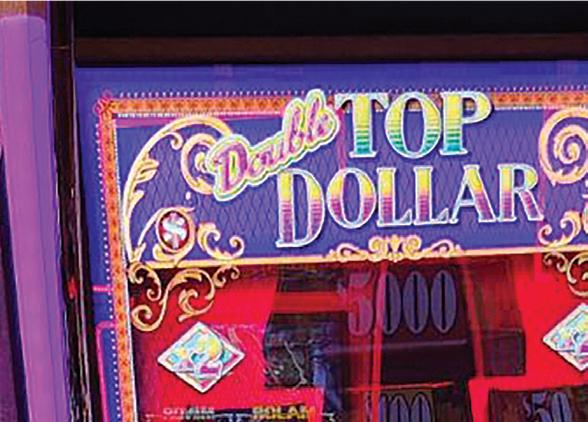

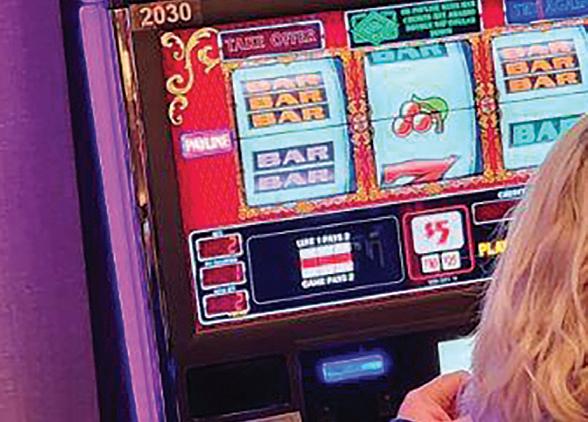
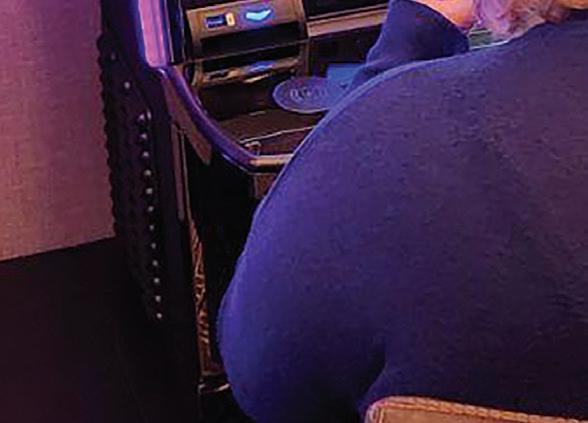

players can take a quick break for a soda, water or tea at their leisure.
Despite how busy the casino was on opening day, no one had to wait in line long for drinks here. Terre Haute was also surprisingly easy to navigate despite the size of the casino. Overhead signs clearly pointed the way throughout the gaming floor, an advantage to those who are visiting the casino for the first time.

But walkways there are narrow, which gives Anderson’s casino the win for which casino is easier to navigate.



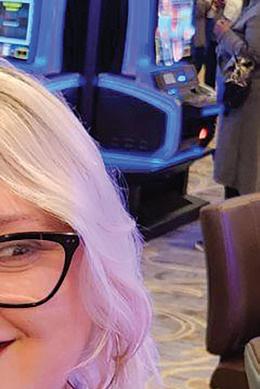


Tied again! Hoosier Park also wins
said it kept veterans and players with

the outdoor updates. Still, Terre Haute

So we are back to being tied!
Hoosier Park also wins the parking category, thanks to recent Caesars updates. Caesars restructured the parking lot to provide space for “ample accessible parking.” The operator said it kept veterans and players with disabilities in mind when developing the outdoor updates. Still, Terre Haute grabs the amenities category because its facility has an accompanying resort. So we are back to being tied!
LAURA MACK Staff Writer
Unfortunately, the hotel portion of THCR was not yet ready for patrons when we visited, but the hotel side of the facility opened May 15. The hotel features 122 luxury rooms, a hotel pool, rooftop lounge and coffee shop.
was not yet ready for patrons when we

Hoosier Park’s new high-limit room had have games like Double Top available, but the high

Hoosier Park’s new high-limit room had an assortment of old-school slots and current favorites, along with table games. However, this area fell short when it came to variety. High rollers have games like Double Top Dollar and Dragon Link available, but the high limit room had several duplicate machines.



Though the expanded main gaming floor brought with it several new slot machines as part of the recent update, many of the games are duplicates. This is one drawback for those who might be looking for slot machine variety. One example of multiple duplicate machines is Buffalo Ascension. Yet fans of this slot more than likely will not have to wait for a seat because Hoosier Park’s casino has nearly a dozen of these machines sprinkled throughout the casino floor.
Other games like Hot Stuff Wicked Wheel were a little harder to find. The Anderson casino has this game, but only two machines, which were often occupied by Wicked Wheel aficionados. Hoosier Park also has a couple of versions of the standard Wicked Wheel game, including the Phoenix and Panda variations.
Hoosier Park pays homage to several old-school slots, as well. There was no shortage of classic three and five-reel slot machines like Triple Diamond Stars and Diamond Gold on the gaming floor.
But there can only be one winner – and in this faceoff, overall, THCR managed to pull away in this race for pole position between the top two.
Congratulations, Terre Haute!

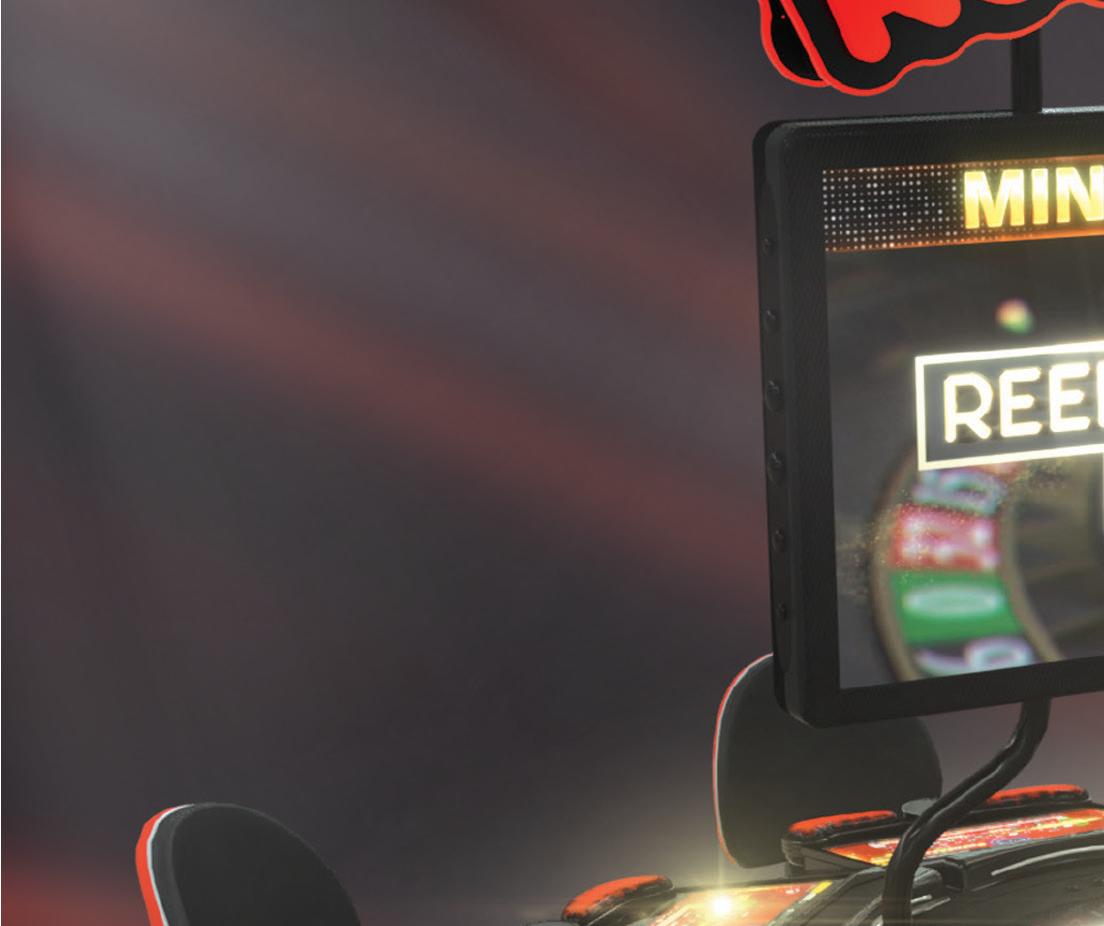
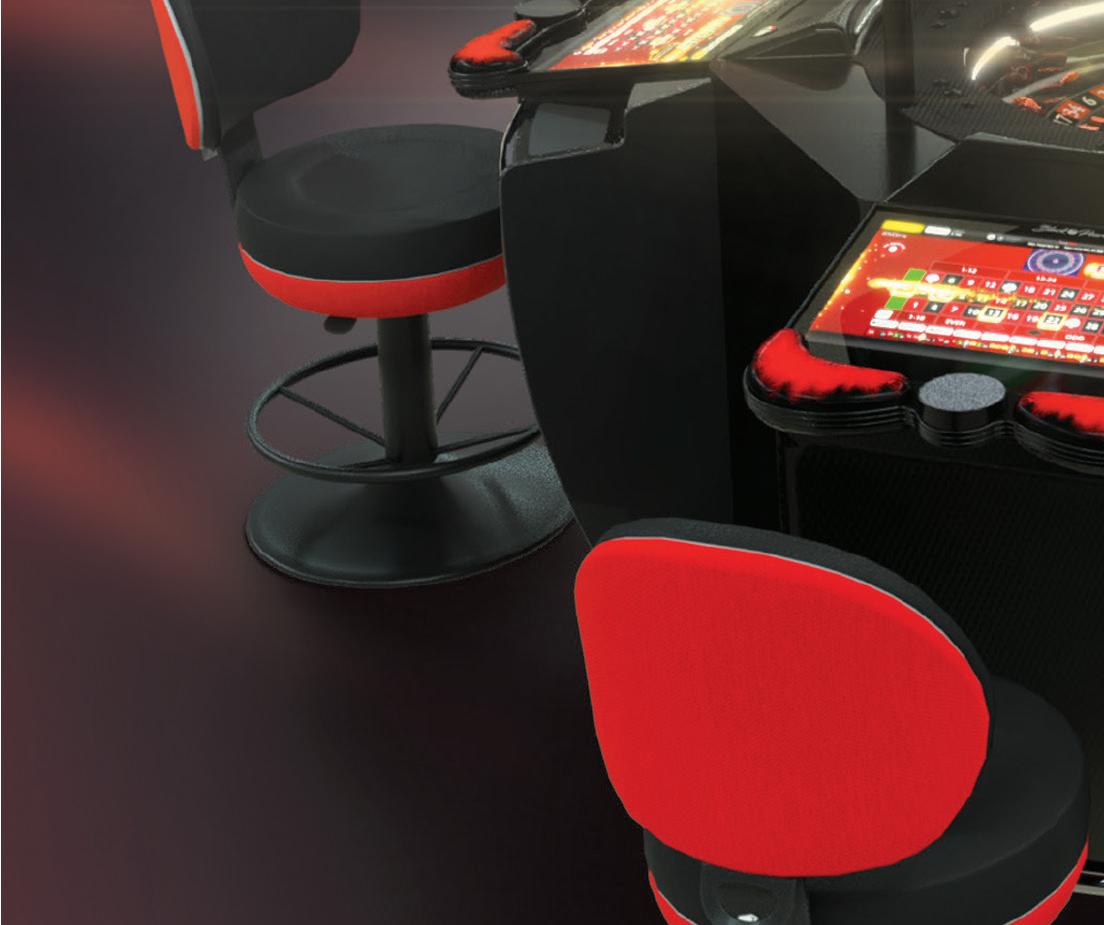

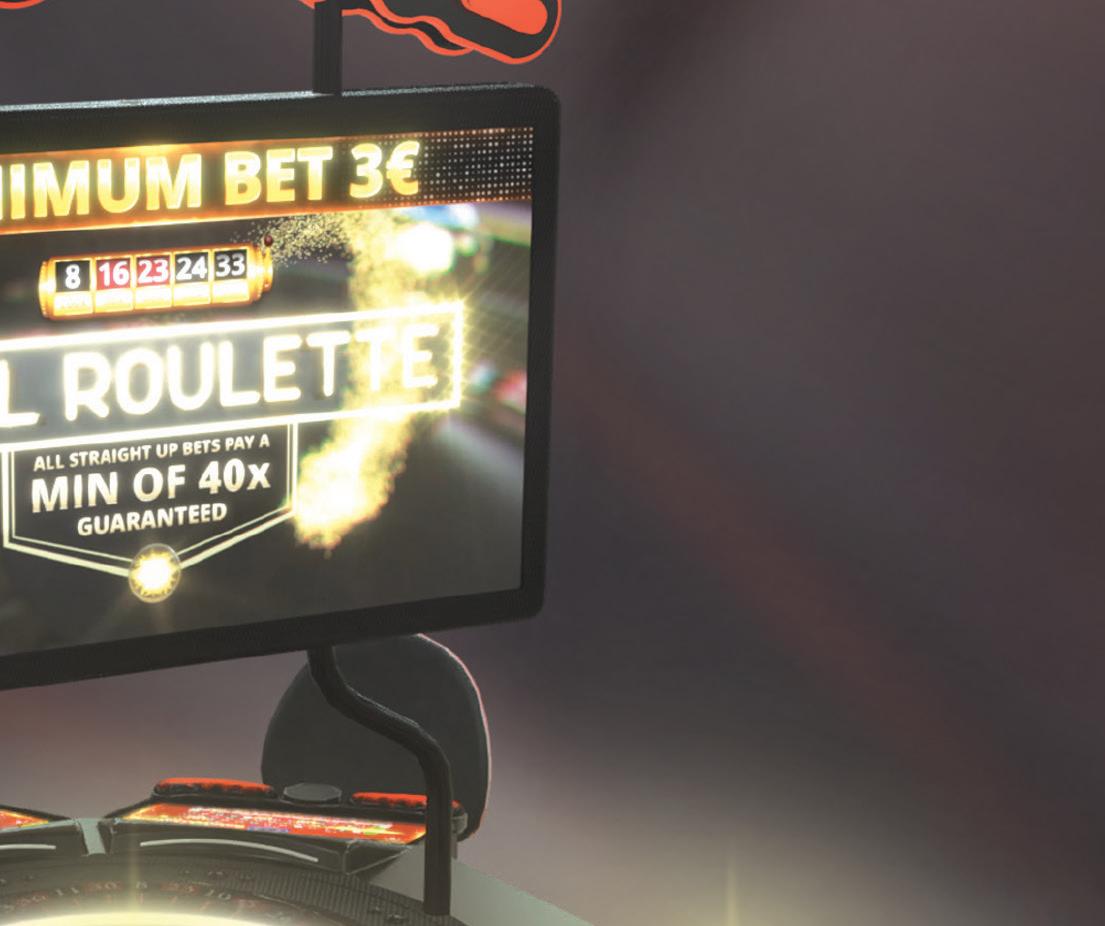
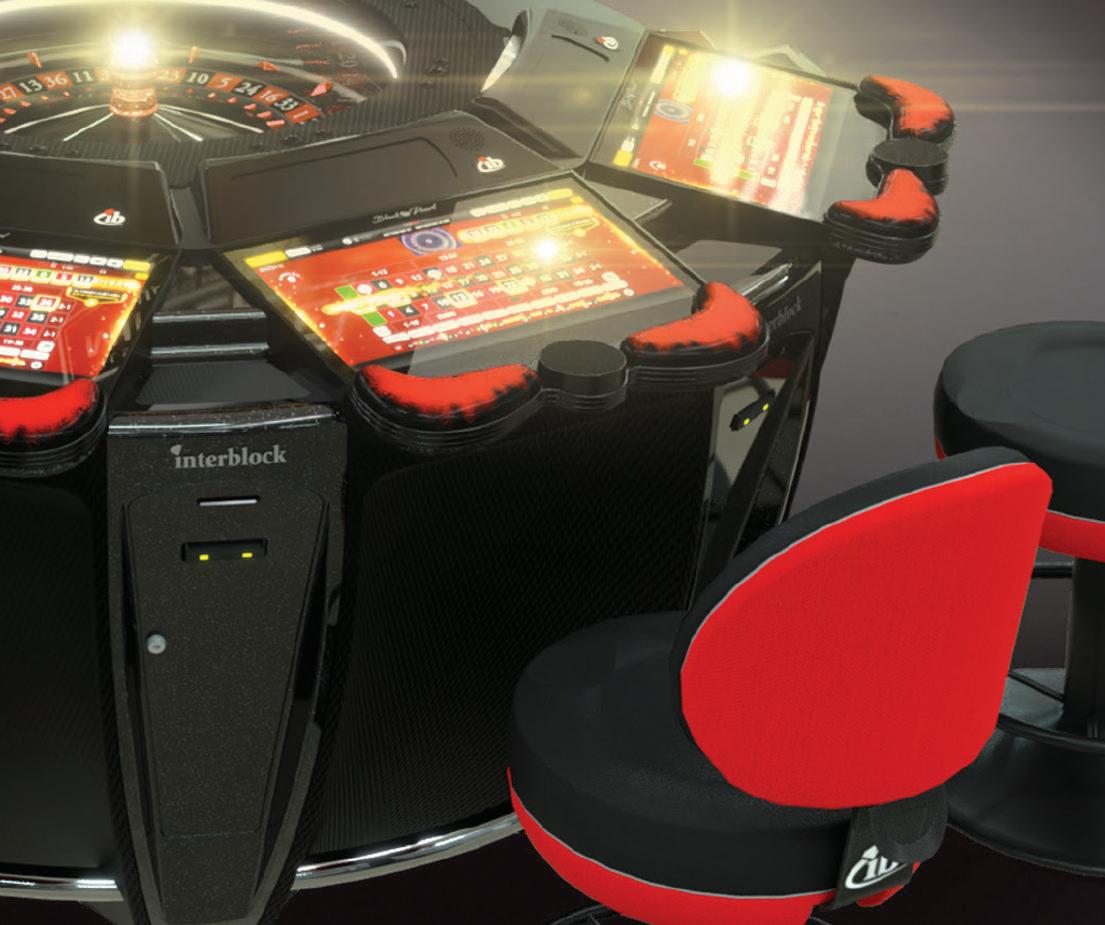




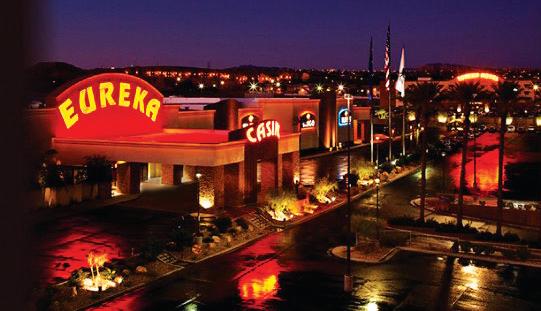
We spoke with returning guest, CEO Andre Carrier, about Eureka Casino Resort’s expansion. He aims to not only change the look and feel of the casino, but to also build residential housing around it.
What can you tell us about the property reinvestment you’ve got going on?
The building itself will look very different. What it’s looked like for the last 25 years and what it’ll look like for the next should be very different. It’s funny, you don’t very often get a chance to change the way a casino looks. Every space on the inside, every last square foot of it, we’ll get remodeled and reimagined so it is in the best form and with the best functions, amenities-wise.
And then the next part is we have a lot of land adjacent to the property. And it appears the highest and best use of that land beyond our resort utilization will be residential. So we have enough space where we want to have a diversity of residential options, everything from workforce housing for our folks and for the other folks in Mesquite that are still looking for the path to individual home ownership. And then we want to have apartments. I would say resort-style condominiums, townhome living, because that’s really popular for those people who are seasonal residents, who someday may become full-time residents.
So that’s the whole package of what we’ve announced. About $40m in the initial phase, which is really resort-centric. And then an additional probably $60m to realize the full residential and retail growth.
It’s amazing, the two different components, the casino resort and then the residential. Are there a lot of casino resorts that are looking at residential properties as well?
It’s a fair question. I think it may be unique to us because of the amount of land we have surrounding the property, and then the nature of what our abutters are. Our abutters are, predominantly, homes. So when you look at what you are going to build between homes and the casino building, it makes the most sense to build homes and then maybe some purposeful, well-thought-out retail that would also add to quality of life.
The piece of it that shouldn’t be – and may not be truthfully in the years to come – is workforce housing. I mean, my sense is that may be more topical in the years to come as we look to find answers to
just how difficult it is to recruit and retain the workforce necessary to run these big, angry monsters that are resort casinos; they take a lot of time and a lot of talent every day to run.
For sure. Did we read correctly that you folks did two years of research before kicking off this redevelopment? What did your research find?
Yeah, so some of what we were trying to determine is: Is the highest and best use to continue to expand your resort platform? Or is the highest and best use something other than that? To just leave optionality, infinite optionality for yourselves. In that time, we looked at the big, moving trends: the growth in Washoe County residentially and where those people were coming from. What particularly was attracting them? What was the lifestyle that people were seeking when they were moving to southern Utah? It stands to reason that, ecosystem-wise, Mesquite to St. George or Washoe County are pretty similar. We researched how to find the balance
when you’re in a town like Mesquite, where one of the reasons people like it is because it’s small, it’s intimate, it feels safe, it feels like a place I once knew, only warmer in the winter. So how do you design and how do you build and how do you have growth in mind but still serve that vision of the community? How do you do it right?
And the other thing we researched was our own employee-owners’ journey. The purpose of the ESOP [Employee Stock Ownership Plan] is a long-term retirement benefit. You hope you can find a path to provide the same value to someone who’s 55 today and will retire some time in the next 10 years, to someone who’s 25 today who really may not retire for 30 years. And if you think that way, you really have to change and think about a much longer horizon.
Obviously, when you’re talking about redevelopment, part of it as you mentioned earlier is remodeling, changing the look and feel of what you’re doing. Let’s talk a little bit about the changes we might expect to see at the resort itself. How are you hoping the feel or vibe of the new Eureka will be after this redevelopment?
If you think about it, casinos 25 years ago were dark places. And I mean that literally, the colors and the light content. Casino design has really changed to become really light. Not bright. But you can now have natural light as a component of a casino. Those are all things you’ll see in this next iteration of Eureka. And I think design matters. You want to go to a place where –and not every restaurant gets it, not every hotel gets it – you want to go into a place that says, this feels exciting and comfortable. I want to spend time here. I want to bring people here. This is fun.
So the customer we’re building for today, they just don’t like the same things. Their homes are probably decorated very differently. I think it’s time for us to build for the customer that we have today much more so than the customer we had 25 years ago, in what it feels like and looks like. Then we have to be mindful of the fact that we’re
really wanting to build for a customer that is yet to come, in both amenity and feel.
What about this project excites you the most?
I love the idea of bringing something new to our employee-owners that they are proud of. As we’re finishing it, they look at it and they’re like, “This is so much nicer than I thought it would be. I feel so good about it. I want to work in that space. I’m proud of our business. I’m proud of our company.”
Then our long-term customer, I feel like they are members in a club. I really do. I feel like we run a country club in a way and they’ve been our members for years. And I love to do a clubhouse remodel that they just are excited about and want their friends from Wyoming to come down and stay at the club, and visit with them for a few days. I just love that reaction, that excitement that comes with it. That’s what makes us really animated to do it.
That’s cool. Now, we’re having this conversation while you’re in New Hampshire at Eureka’s other property, The Brook. How are things going over there right now? So we just unveiled a lot of new amenities

there. We just opened and remodeled the sportsbook there, with a massive 19-by-140foot screen, a massive, curved screen there and completely remodeled that just in time for the [NBA and NHL] playoffs and most importantly we opened it for the Kentucky Derby. There is a new smoking parlor, which we had not had. We’ve unveiled a lot of new outdoor areas and we’ll continue to do that all summer long, as we expand off our deck into the old track.
And we are building a new restaurant, which we will open this summer with a long-time restauranter in New Hampshire, the Wong Family. We'll announce the name in probably the next month [at the time of writing]. Currently, we call it “Project Dragon.” Because it’s the year of the dragon, so it’s an appropriate name for a Chinese restaurant being built this year.
That’s awesome. We’re almost halfway through 2024. How’s the year been so far for you folks?
I think it’s been good. All of us continue to wonder if the consumer is going to start to have some wallet restrictions. We’re clearly watching the amount of consumer debt and the cost of consumer debt and how that affects vacation and travel. We’re certainly sensitive to pricing in the hospitality business and just trying to keep up with the cost of labor and food means your money doesn’t go as far as it did four years ago. And so we’re watching to see if that causes some retraction in visitation or numbers of days or total spend. I like these times when you’re not taking anything for granted, but you’re grateful that business continues to be strong. You appreciate every person who comes in because you know it’s not infinite.
What can we expect out of you guys for the last half of 2024?
ANDRE CARRIER Eureka Casino Resort CEOWe have two new restaurants. So the first part of the Eureka phase three will debut probably in September and that’s the expansion of Gregory’s, and the opening of Nine Dragons in New Hampshire. We’ll also probably have more to share about the remodel amenities, specifically that they can expect in this phase one of the remodel.




















































Gaming America sat down with Interblock Global CEO John Connelly to discuss the company’s design philosophy and product development process.
Could you tell us Interblock’s product design philosophy in three words and explain why?
We’re always innovating. We have a culture within the company that we do our best to not follow. It doesn’t mean we don’t admire innovation from other companies, and sometimes take those ideas and concepts and try to build upon them, we’re not beyond that. But we do our best to innovate. Second, we’re always looking for technological efficiencies. How we use technology, combined with innovation, to create efficiencies in different ways.
The third word? I would say, we do our best from a player diversification standpoint. As the electronic table game (ETG) space evolves, we learn the types of players and, quite frankly, we’re still learning. There are far more types of players interested in ETGs than we envisioned. So we’re constantly trying
to diversify our R&D portfolio to address different player demographics.
Are there any brands in or outside of gaming that have influenced or inspired how you design your ETGs?
This isn’t perhaps the most traditional definition of branding. But I would say the live table game industry that has existed for well over a century is the foundation from which we build. We’re not looking to replace blackjack, craps, roulette or baccarat. We’re looking to take those brands and use the three words we just discussed to evolve those brands for a new generation of player, and the global environment we live in today.
What does the design process look like when you’re creating a new product from Interblock, from conception to launch?
The good news, or bad news, is that it’s
not as [based] in a flow chart as you would envision. Ideas and concepts come from a plethora of places. A more textbook component to what we do is once we identify a concept or innovation we believe could be successful, we will do competitive gap analysis, market studies and build out what we call a requirement document. From that, we have discussions on whether we think this should go to the next step, because we have far more ideas than we do engineering resources.
We have to make sure we are data driven in our thought process. I don’t believe the company 25 years ago was as data driven as it is today. It was a lot more gut feeling and emotion, which can be a key differentiating factor, but shouldn’t be the driver. We use data-driven decision making and then based on the concepts that are brought to the table, we have a committee that reviews those concepts, prioritises them, builds out a requirement document and a scope of
work. Then we decide where or if it would fit into the product road map. Quite frankly, there’s a bunch of other steps associated with that. It’s not just if it can fit into a product road map and we like the concept, we then look within our own company and our own portfolio. Is it creative or deluded to the overall company and strategy?
When you’re designing ETGs, what factors do you have to consider and are there any that aren’t widely talked about?
I call it leapfrogging. We’re constantly trying to leapfrog the industry in a calculated manner. In doing so, we tend to lean towards concepts and ideas that are noncommoditized, meaning if anybody else was to see or experience those concepts, they would not be able to follow quickly, with the thought process that we can out-develop the industry. We can out-innovate because all we do is one thing.
A lot of people follow Interblock and try to copy what we do. Especially in the past four or five years, we’ve been focusing our efforts on and choosing concepts we know are not easy for someone to copy and follow, which tends to put you more into a mechanical, electrical, hardware area versus software and graphical. Software and graphics are emphatically easier to copy and follow. So, if you notice our product portfolio and what we’ve been doing, there’s some cutting-edge technology we’ve been using, such as live dice recognition, which has been the Holy Grail for decades. We are in the process of launching now. Things like that are drivers in our process.
Could you give me an example of a lesson you’ve learned from an older product that you were able to integrate into something new?
Oh, I can give you dozens of examples! I’ve been in gaming for over 33 years and in a lot of cases, historically, someone will create a game and then move on to the next. If you look at the slot industry and the number of titles created on an annual basis, you’d be shocked by the number
of titles that actually drive revenue. It’s fractional. Most titles never succeed and you move on to the next, and when you do finally find a title that succeeds, you copy it. When it comes to ETGs, you can’t have that mentality because there’s only one blackjack per sé. There are subsets, but blackjack’s blackjack, craps is craps. You don’t have that many bites at the apple. You have to refine. We’ll have six versions of one product before it goes to market. We’ll beta test numerous times before we feel comfortable in releasing it, which was not the company’s culture 10 years ago. Today, we’re very methodical in beta testing and if we’re not satisfied we go back to the drawing board, modify and beta test again until it reaches a level where we think it’s achieving its objective. In some cases we’ll pull products that, for whatever reason, did not achieve their objective and we’ve exhausted our ideas. We table it, we never throw anything away. We table, then as we evolve, we go back and revisit products because we’ll learn something new within a year or two. We’re not the kind of company to just throw anything into the market, and I think the results of that are why we’ve been able to achieve the position we have. It’s quality over quantity.

It directly relates, because you don’t have that many traditional table games to really innovate from per sé. So you need to make sure the concepts you come up with, you perfect them and make them work.
Are there any emerging trends you think could impact the design of ETGs in the next few years?
Yes, yes and yes. People are starting to realize that one of the key omnichannel products in existence today, with the ability to bridge the online gaming and traditional casino space, ties directly to ETGs. I’ll give you a couple of key data points. When you play online, there are no chips on table games. But if you mentioned taking away chips on a casino floor, people think you’re crazy. However, we just released a product called the Smart Pit, which does not have chips. It’s taking off and players are adapting to it very quickly. There are so many benefits to not having chips on a casino floor, and we think there’s a strong correlation with online players and ETGs that’s bridging the gap.
Online, you have monitors and screens and faster play action. ETGs have monitors and screens with faster play action. Online gaming is trending, especially with the younger demographic. What’s interesting on the casino floor: we’re finding that we’re getting not just a male demographic under 45, we’re getting female demographics. Players come over who have always been intimidated to play, wanting to try table games and play it in a more solitary environment.
JOHN CONNELLY Interblock Global CEOIt seems like because these machines are different, it’s breaking traditional expectations and increasing accessibility. Well, you try walking up to a traditional table game pit and sitting down when you don’t know what you’re doing! It’s pretty intimidating. We’re seeing a lot of that, hence the growth of Interblock... There’s definitely a demand. We’ll see where it takes us, but it’s exciting.
At IGA, one topic seemed to be on everyone’s mind: artificial intelligence and its potential impact on the gaming industry.

No topic was hotter at the Indian Gaming Tradeshow & Convention in Anaheim, California this year than artificial intelligence. The entire first day of sessions was devoted solely to AI, and it was brought up again and again in subsequent panels and discussions the rest of the week. Even Jeannie Hovland, Vice Chair of the federal National Indian Gaming Commission (NIGC), who was at the Indian Gaming Association conference, identified AI as one of the biggest issues facing Tribal gaming today (hear more of her views overleaf).
But, while AI is perceived as the hot new ‘thing,’ Joseph Bunevith, VP, Government and Regulatory Affairs at Gaming Laboratories International, said in the panel 'The Future of Gaming, What’s Next?' that anyone who has used spell check on a word processor has used AI before. Said Bunevith, “Everybody’s been using AI for a long time. We’ve been preparing for this moment for a long time.” Bunevith’s comment was seemingly intended to remove some of the mystery surrounding AI. But to underscore just how new and different it still feels to those
working in the Tribal gaming sector, Amit Sharma, CEO of BMM Innovation Group, asked the audience of his session, 'Data Security and Privacy in AI-Enabled Casinos,' how many are using AI in their casinos –and hardly anyone raised their hand. Still, he said, that’s no reason to be afraid of AI. Rather, he encouraged attendees to be thoughtful about how they approach the technology, “One of my buddies likes to say we’re all going to an AI party,” he said. By that he meant, when you go to a party you have to be careful about who you interact with, where
you put your drink. You have to be vigilant. The same is true with integrating AI into your casino operations.
One thing anyone looking to AI should be concerned about, according to Sharma, is algorithmic discrimination, in which an AI discriminates against one kind of user or another. “Those are things you have to be careful of as an operator.”
Another factor he said all companies looking to implement AI should consider is how the data that feeds its AI is stored. Often data can contain the sensitive, private information of your customers, which are tempting to hackers and could create a cybersecurity risk for a casino.
Said Sharma, “That’s why it’s important to collect only the data you need.”
But John Acres, CEO of Acres Manufacturing Company, warned attendees of his session, 'AI in Casino Operations and Management,' not to limit themselves in thinking about what they can do with AI. Yes, he said, “It’s going to take a long, long time” before AI is smarter than humans. “It’s not completely ready yet,” he said, but it will someday change the world. How? Acres said it will change the world by doing things we could have never dreamed of before. AI will revolutionize gaming – not to mention a whole host of other industries – by leveraging its incredible power to find patterns, take actions on those patterns, and to learn and adapt.
How might that apply to gaming operations in particular, you ask? Well, Acres said AI will someday usher in a new era where everyone’s gaming experience is tailored specifically for them. As it is now, casinos can only offer their players relatively generic rewards or offers. But in the future, with AI, casinos will be able to offer players precisely calibrated offers that will keep them playing but won’t bust them out. Said Acres, “There’s no reason a game should cost the same for every player.”
A long-time veteran of the gaming industry, Acres said the business’ essential goal is “to make each player feel like they’re this close to hitting the jackpot.” Now with
“ AS IT IS NOW, CASINOS CAN ONLY OFFER THEIR PLAYERS RELATIVELY GENERIC REWARDS OR OFFERS. BUT IN THE FUTURE, WITH AI, CASINOS WILL BE ABLE TO OFFER PLAYERS PRECISELY CALIBRATED OFFERS THAT WILL KEEP THEM PLAYING.”
AI, he said, “we have this powerful new tool. We have to harness it for this job.” The panelists of 'Game Changers: Exploring AI and the Technologies Redefining Gaming,' Darwin Braunagel, Senior Manager at Eide Bailly; Hugo Carcamo, Cybersecurity Consulting Manager, Moss Adams; John Wolf, President of Global Systems and Services with Light & Wonder; Mridula Saini, CRO of Ikasi; and Stuart Kerr of VizExplorer, echoed these sentiments, opening their session with a discussion about the flexibility AI will offer casinos.
They said AI will allow casinos to better understand the value of each player that comes through their doors. That, in turn, will help casinos figure out the right room for each player at the right rate. In the end, the player experience will be greatly improved through this customization. Said Saini, “Let AI lead the process of offer generation.”
At one point, Braunagel even wondered aloud whether AI could someday be used to replace clerks in a casino. But once again Acres was clear: this revolution isn’t coming tomorrow. AI remains in its infancy and for quite some time human intelligence is going to be required to make it work. Said Acres, “It’s one thing to have knowledge. It’s another thing to have wisdom. Wisdom resides solely with humans right now.”
Yet opportunities abound with AI.
E. Sequoyah Simermeyer, the former Chairman of the NIGC who resigned his office to take a job as a VP for Strategic Partnerships with FanDuel, spoke in a panel
called 'Legal and Regulatory Considerations for AI in Gaming.' He said AI is so cutting edge that Tribal regulators have the opportunity to not only get in on the ground floor of policymaking but to flex their muscles as regulators, showing the world just how sophisticated they can be.
Speaking in the 'Future of Gaming, What’s Next?' panel, Melissa Blau, Director at iGaming Capital, said she thinks AI could offer an “elegant solution” to a persistent problem facing responsible gaming efforts, the fact that most players don’t use the gaming limit tools available to them. The panel discussed the opportunity operators have to give players a free bet if they set a gaming limit. Otherwise, said Blau, “Nobody is going to admit they have a problem.” While regulators are struggling to manage the massive amount of data now at their fingertips, AI in the future could help them make better sense of trends and identify problems, she said.
Even in the conference’s exhibit hall you could see AI’s growing influence. In one example, at the booth for Active Insights, a San Diego and Las Vegas-based company, visitors could watch security camera footage that can be fed into an AI to detect a litany of illicit behaviors, from cheating at a blackjack table to signs of sex trafficking. The company, which boasts a product design advisory team that includes Hyatt Regency, the NBA, Bally’s and Carnival Cruise line, offered a glimpse of what AI could mean to casino businesses in years to come.











At the Indian Gaming Tradeshow & Convention in Anaheim, Gaming America caught up exclusively with Jeannie Hovland, Vice Chair of the National Indian Gaming Commission.
Jeannie Hovland, the Vice Chair of the federal National Indian Gaming Commission (and the only sitting commissioner on the NIGC at the time of writing) spends plenty of her time traveling the US, meeting with Tribal gaming operators to learn about their unique issues. She firmly believes what works for one Tribe does not necessarily work for another. We caught up with her at the Indian Gaming Association’s Indian Gaming Tradeshow & Convention in Anaheim, to discuss the diversity among America’s Tribal gaming operators.
You have a long history of public service. Can you tell us a little bit about your professional journey and how it eventually led you to the NIGC?
Yes, I was born and raised in South Dakota and our Tribe, Flandreau Santee Sioux
Tribe, opened the first Tribal gaming facility in the state, the Royal River Casino. And I went to work in the coatroom while I was going to college! So that was my first exposure back in the early 1990s. I then went to work for US Senator John Thune [Republican-South Dakota]. I started out as outreach. That was in 2005 through 2018, so I had the opportunity to visit our nine Tribal nations.
It was so amazing. I spent a lot of time in the communities. And many of the meetings were in the casinos. Of the nine Tribes, eight have gaming operations. I would usually stay at one of the casinos when I would travel, so I got to have that exposure. Then I went to Washington DC and was Commissioner at the Administration for Native Americans; that gave me the opportunity to go to several other Tribes and typically their conferences were hosted at their casinos.
That’s when I really got to see a look at the diverse gaming industry across our Tribal nations. And now, since I’ve been with the agency, the opportunity to see back of house, a much broader view of the different gaming operations from the regulatory side. So it’s really evolved from the policy side when I was with the Senator’s office now to the regulatory side.
Starting at the coatroom. Starting at the coatroom. Yes!
I think sometimes the general public sees native communities as a monolith. But they’re not. Can you talk about the differences in working with different communities and what that’s like? I really, really appreciate this question
because I absolutely agree with you on this. Each of our Tribes – we’ll start with our Tribes – we have, as you know, 574 federally recognized Tribes. We also have state-recognized Tribes.
Which is different. People need to understand that.
Yes! Many of them are trying to seek federal recognition. We have over 600 Tribes, whether they’re federal or state. And each of our nations, even in South Dakota, our Lakota Dakota Nations, are all sovereign. We might share the same language, but we have our own dialect. Then you have 574 state Tribes, also all with the different languages and the different dialects among those languages. Then you talk about the geography of the land. So that’s very diverse. Some are very small. Some are very large land based. The cultures are different.
Then we go to looking at the historical context that affects jurisdiction from the treaties that were ratified, the details in those, as well as are they in a state that’s a Public Law 280 state? So then there’s the jurisdiction; then we look at even Tribes that exercise self-governance. Is it BI [Bureau of Indian Affairs] run? Is it Tribally run? So we look at the different jurisdictions. We look at the treaties. We look at the geography of the land. We look at the culture. The languages. Each federally recognized Tribe has their own constitution. So it’s very diverse. Then we go to our indigenous communities – our native Hawaiians. While I saw similarities of our indigenous peoples from Tribes to our Pacific Islanders – again, the uniqueness. Even among their communities, our Chamorro, our Carolinians and Guam and Saipan; the beautiful, rich culture. Again, the similarities that we have as indigenous peoples, but also the uniqueness. So it’s quite amazing and that’s why it’s so important for me to get to the communities, our Tribal gaming
communities, as much as possible, to see their unique challenges. Their successes and ways that our regulations are supporting the success of their industry but also hear from them if there’s regulations we need to look at.
That makes a lot of sense. You obviously have a deep understanding of native cultures and native issues. But my understanding is that you’ve still been learning about the gaming industry. I’d love to know what you’ve found interesting as you’ve gone on this journey. What has been most surprising to you?
What has been so surprising, and so encouraging to me professionally and personally, is just how the gaming industry has had such a positive impact on Tribal communities. For the betterment of the Tribes and our people, looking at the diversity of that. Some gaming operations don’t have a lot of revenue, but they still provide a lot of jobs. That in and of itself is something to be very proud of. Other
gaming operations have a lot of revenue that they’ve been able to reinvest in their community and it’s just very encouraging to see our Tribes really leading in this industry.
What do you see as some of the biggest issues facing Tribal gaming today?
The continued compact negotiations. The jurisdictional issues we just talked about. But also I would say the challenge we’ve heard a lot about at this conference is getting a full understanding of artificial intelligence and how that will impact the future of gaming; as well as working with our agency, working within the confines of the Indian Gaming Regulatory Act and our regulations to support the advancements of technology. We see that trend now in the gaming industry.

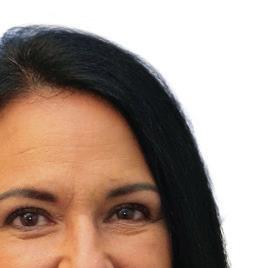
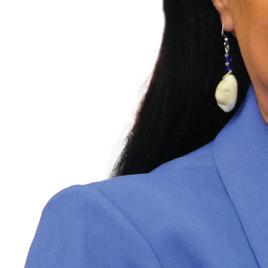
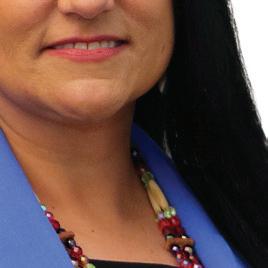

 JEANNIE HOVLAND National Indian Gaming Commission Vice Chair
JEANNIE HOVLAND National Indian Gaming Commission Vice Chair
I’ve seen talk, at least among some analysts, that in future years Tribal gaming operators will become the top operators in the US. We’re already seeing a little bit of that now: San Manuel operating the Palms, the Seminoles owning Hard Rock. Do you agree with that assessment? Are Tribal gaming operators poised at some point to become the dominant force in America?
Well, I can’t say for certain whether that will happen or not. But I am so pleased to see the trajectory of Tribal gaming as it continues to increase. Seeing another historic total last year, almost $41bn, I’m just so proud of our Tribes and the way they have adjusted to the changing trends, of the consumer demands. So I don’t have the answer, but I can say they continue to be successful leaders in this industry.
You mentioned tech and AI. Obviously, there’s been a lot of talk at this conference about sports betting and iGaming.
What are your thoughts on those developments as it relates to Tribes?
Well, I think it’s very important. It’s the trend across America and globally. The next generation, more interested in technology, access it on their phones. So I think it’s a very important discussion and we will continue to work as an agency within the confines of the Indian Gaming Regulatory Act, and with our Tribes, to look at the flexibilities we have to support those changing trends.
At G2E last year, there was an excellent Tribal gaming panel about the importance of operators hiring members of their own Tribes. I’m curious about your thoughts on that and making that a priority. Tribes have definitely made that a priority because they created their gaming industry to benefit their people and their community. One of those benefits is the employment opportunities and diverse careers that are right there in the gaming industry, whether it’s on the operations side or the regulatory side.
People forget there are two sides to that.
Yes. We talked about that in a panel this week that our agency hosted and we had a Gila River, very large gaming operations in an urban area. And then contrast that with the Black Feet Nation. Very rural, smaller operations.
But it’s important for one reason, because the industry is there to benefit their community, their members. In any job, in any industry, just like gaming, those that are from your community are invested in their community and, typically, they’re to raise their family there or to retire there: they’re there for the long haul. Sometimes the Tribes have to recruit outside of the communities and that’s more of a challenge for people that aren’t from areas; especially if they
“THAT’S WHY IT’S SO IMPORTANT FOR ME TO GET TO THE COMMUNITIES, OUR TRIBAL GAMING COMMUNITIES, AS MUCH AS POSSIBLE, TO SEE THEIR UNIQUE CHALLENGES... THEIR SUCCESSES AND WAYS THAT OUR REGULATIONS ARE SUPPORTING THE SUCCESS OF THEIR INDUSTRY, BUT ALSO TO HEAR FROM THEM IF THERE ARE REGULATIONS WE NEED TO LOOK AT.”
go to a very rural area, harsh weather conditions can be a struggle to have longevity of employees that you recruit from on site.
To conclude, what can we expect from the NIGC for the rest of the year?
Well, we look forward to having a full commission. (The commission consists of three full-time members, a Chair and two Associate Commissioners. At the time of our interview, the only commissioner is Hovland herself.) In the meantime, we continue to have our trainings. Our annual report I want to point you to if you haven’t reviewed it for fiscal year 2023. Our training department, we were able to reach over 20,000 training participants last year. We have training on the horizon. Some in-person training coming up in May at the Hard Rock casino in Oklahoma. We will really look at compliance and the importance of compliance. We’ll have our subject-matter experts there. We always have the Tribes included there with their subject-matter experts.
We will also continue on with our outreach. It’s important for me to get to as many communities as I can. We have
over 500 gaming operations, 244 Tribes. So really trying to meet with our Tribes that have a gaming operation to receive their feedback on the implementation of the regulation changes. There’s several we made in 2022 and 2023. We have received their feedback, since those have now been updated and fully implemented, and hear from them if there are other regulations they will want us to look at and revisit once we have a full commission.
You’re racking up those frequent flier miles! It’s got to be gratifying for you, seeing the different communities, the different facilities etc.
It’s interesting and I think it’s vital. Because when we’re out in Washington DC…
It’s a bubble.
Exactly, it’s a bubble. And we cannot assume, like we talked about with the diversity of Tribes earlier, that what works for one Tribal community gaming operation is going to work for another. So understanding the complex, best practices, as well as the challenges, is really important for us.









From the floor of the Indian Gaming Tradeshow and Convention (IGA), Gaming America covers conversations had regarding Tribes and sports betting in California.
At the annual Tribal gaming conference, the Golden State’s gaming Tribes revisited the unsuccessful attempt to legalize sports wagering in California in 2022. Their victory in that costly campaign was proof, they said, that they control the future of gaming in California. Nearly a year and a half later, the historic battle over sports betting in California continues to resonate.
The fallout from the November 2022 campaign, which saw two dueling
initiatives rack up the most expensive ballot measure fight in US history, was a hot topic at the Indian Gaming Association’s Indian Gaming Tradeshow & Convention in Anaheim, California in April. Two panels about the future of sports wagering in the Golden State were held on the second day of the conference (April 9) and neither disappointed as Tribal leaders suggested the results of the 2022 election showed that they,
and not online sports gaming giants like FanDuel and DraftKings, will control California’s gambling market.
As you might recall, one of the measures from November 2022 was Proposition 26, which would have legalized in-person sports betting at California’s Tribal casinos and horseracing tracks. That initiative was supported by California’s gaming Tribes. Its rival measure, Proposition 27, would have legalized online sports betting and
was supported by the usual suspects: FanDuel, DraftKings and BetMGM, among others.
About $460m was raised for their concurrent campaigns, which seemed to confuse California voters. In the end, both measures failed – which is widely viewed as a political win for California’s gaming Tribes, as they were able to maintain the status quo where they dominate the Golden State gambling market and keep online gaming operators out of California.
On the morning of April 9, James Siva, the Vice Chairman of the Morongo Band of Mission Indians and the Chairman of the California Nations Indian Gaming Association, spoke on a panel with FanDuel CEO Amy Howe. The session, entitled ‘Balancing Act: Tribal Sovereignty in the New Frontier of Sports Wagering,’ was noteworthy for Howe’s concession that the November 2022 election was a “spectacular failure” for her side. She acknowledged online gaming operators like hers “learned a lot” from the campaign and have come to recognize that the sports betting market in California will be different when it’s legalized. Most notably, she explicitly said California gaming Tribes will be the ones in charge when sports betting is finally legalized in California.
Howe said, “It will be up to the Tribes when it happens, how it happens and what role” companies like FanDuel will get to play in it. Howe said sports wagering, when legalized in California, “must” run through state gaming Tribes. Said Howe, “It’s going to be different in California than in any other market... We’re pretty open to what that future looks like in the state of California.”
Howe made clear she’s not only okay with letting the Tribes run the show, but she respects their efforts to provide for future generations. That “really resonates.” She also added that “We hope and believe we can be an important ally” to the Tribes in sports betting, but also recognized
that building trust with the Tribes after the election “will take a long time.” Siva, for his part, was blunt in his assessment of the situation in the first panel, telling the audience, “Tribes are the operators in California. Period.”
Siva was also firm that there is no timetable for when sports betting would be legalized in California. This past fall, two more proposed sports gaming initiatives were submitted to the California Attorney General’s office. But those efforts were ultimately abandoned.
That guarantees there will be no sports wagering measure on the November 2024 ballot, leaving 2026 as the earliest California voters may consider the issue again. To be clear,
California voters will have to vote on legalizing sports betting in the Golden State. Unlike in other states, legalizing sports betting in California requires a change of the state constitution, which means a vote of the people.
In the meantime, Siva said California’s gaming Tribes are having conversations about how they’d like to move forward. He said the Tribes will not always agree on everything, but they’re united in purpose. Said Siva, “We continue to have these discussions to figure out what our narrative is going to be.”
He also warned that the Tribes have long memories and won’t forget previous efforts to divide them on sports betting. Unity among the Tribes, he said, was

“ TRIBES ARE THE OPERATORS IN CALIFORNIA. PERIOD ” - JAMES SIVA, VICE CHAIRMAN OF THE MORONGO BAND OF MISSION
important for them to defend their turf and ensure they remain the dominant operators in California.
He said the negotiations will take place behind the scenes and at the Tribes’ pace. They will decide when sports wagering moves forward in California. It could be in 2026, but it could be later. No outside influence will rush them, Siva said. Everyone needs to be patient.
Howe said she was content to let the Tribes work things out in their own time, although she did also acknowledge that the California market is incredibly tempting. Said Howe, “California can and should be the greatest and biggest market in the world for this, sports betting.”
To conclude the morning panel, the moderator, Jacob Mejia, Vice President of Public and External Affairs for the Pechanga Development Corporation, asked Siva what message California Tribes have for companies like FanDuel. Said Siva, “Get out of our way. We know what we’re doing. This is our industry. We know the path.” That seemed to play well with the audience, which applauded loudly. Said Mejia, “Well said, Chairman.”
Later that afternoon, a second panel was held, ‘The Future of Sports Betting in California: Timelines and Tribes.’ This session also featured Siva, as well as
Johnny Hernandez, Jr., Vice Chairman of the San Manuel Band of Mission Indians; Victor Rocha, Founder of Pechanga. net and Conference Chair for the Indian Gaming Association, and Daniel Salgado, former Chairman of the Cahuilla Band of Indians.
This panel was no less blunt, as the speakers said once again that California Tribes, not online gaming operators, hold all the cards in legalizing sports betting in the Golden State. Said Hernandez, “If online sports wagering is going to come, Tribes need to be in control of their own destiny.”
Discussion during the panel opened with talk about California’s gray market for sports betting, a problem Rocha said has been blamed on the Tribes. He said, “It seems to be the thing that people shove in our face. Like it’s our job” to fix it. However, Siva said it's natural for people to look to California gaming Tribes to handle the gray market, because they’ve set the standard for gaming in the state.
From there, the conversation moved to the importance of unity among the Tribes, raising the issue Siva had brought up in the morning session; the fact that not all Tribes will agree on all the issues. Hernandez said it was vital for California’s Tribes not to
“ GET OUT OF OUR WAY. WE KNOW WHAT WE’RE DOING. THIS IS OUR INDUSTRY. WE KNOW THE PATH ” - JAMES SIVA, VICE CHAIRMAN
allow themselves to be divided, as was seen in November 2022 when some Tribes supported Proposition 26. Said Hernandez, “If you divide the Tribes, we’re all doomed to fail.” Added Rocha, “We have to stay united to be successful.”
Panelists said the stakes are incredibly high, not just for California’s gaming Tribes but for all Tribes in California and all Tribal gaming in the US. California gaming Tribes share their revenue with in-state Tribes that don’t have gaming, so there’s pressure to make sure they get it right for those with less revenue. Meanwhile, Rocha said, “The Tribes in California have the opportunity to redefine Tribal gaming” with how sports betting is ruled in the state. California Tribes are generally credited with building most of the gaming market in the Golden State and they’re prepared to defend their territory at all costs.
Siva reiterated in the afternoon panel that the Tribes, not FanDuel, DraftKings or BetMGM, will be sports betting operators in California. He said they’ll likely be like slot machine vendors, but that’s for the Tribes to decide. Said Siva, “We’ll let them know what terms we’re willing to accept.”
Hernandez added that there’s a chance the Tribes won’t allow the online gaming giants into the state at all. It’ll come down, he said, to “how they act” towards the Tribes. It was hardly a subtle warning to executives like Howe.
Then again, subtlety didn’t appear to be on the agenda for the second session, as at one point Siva said Tribal interests are taking a “deep dive” into fantasy sports operators, implyig they’re looking to see if their operations are legal in California. Said Siva, “We’ll hammer them when we need to. When we’re ready.”
Still, the panelists emphasized that their intentions are to be a part of the community, not stand above it. Said Rocha, “When it’s done right,
you can’t tell where the Tribe ends and the community begins.”
He also said that state government leaders need to acknowledge the sovereign power of California’s Tribes. He said one of the great frustrations in dealing with Sacramento – which will be necessary to renegotiate the compacts when sports betting is legalized – is that state government representatives don’t treat the Tribes as equals.
Instead, he said that California’s state government treats Tribes like they are Californian cities or counties, which he said disrespects their sovereign authority. At one point, Rocha lamented that Florida Gov. Ron DeSantis appears to be more accommodating to Tribal gaming interests than California Gov. Gavin Newsom, a pointed critique as the two governors have been political rivals and proxies in the US’s great Republican-Democratic fight for the soul and control of the country. Said Siva, “There’s still this blind spot with Tribal sovereignty” in Californian state government.
Even so, the panels at IGA made it clear that California’s gaming Tribes are in control, thanks to their powerful political showing in November 2022. Speaking of Howe, Siva said, “She’s very much aware that Tribes are in the lead position. We built this industry from nothing.” But, as Howe indicated, the market has the potential to be incredibly lucrative. Rocha wondered whether commercial operators will try to make enter the market again without the California Tribes’ permission.
Salgado said he feels the urgency to make something happen in California –and there’s no doubt that sports betting and iGaming are coming to the Golden State eventually – but felt assured that the FanDuels and the DraftKings of the world have learned their lesson.
Will they try to sneak past the Tribes again? Said Salgado, “I don’t think so. We’ve put our message out there pretty clear. They understand that. They recognize that.”
“ IT’S GOING TO BE DIFFERENT IN CALIFORNIA THAN IN ANY OTHER MARKET... WE’RE PRETTY OPEN TO WHAT THAT FUTURE LOOKS LIKE IN THE STATE OF CALIFORNIA ” –AMY HOWE, FANDUEL CEO.





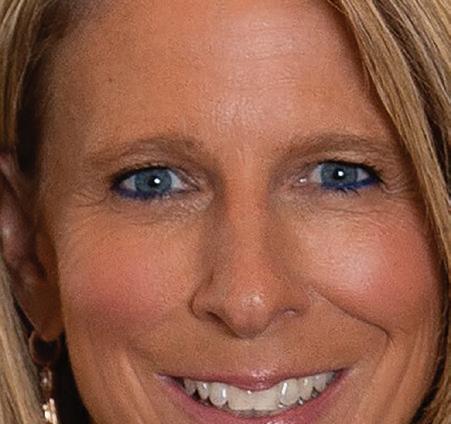






 Amy Howe, FanDuel CEO
Amy Howe, FanDuel CEO






















Reporting from the Indian Gaming Tradeshow and Convention (IGA), Gaming America discusses a litany of panel topics affecting US gaming at every level.
It’s hard to sum up the lessons of a gaming conference in a single quote. But Joseph Bunevith, VP, Government and Regulatory Affairs at Gaming Laboratories International, came close in ‘The Future of Gaming, What’s Next?’ panel at the Indian Gaming Tradeshow and Convention in Anaheim, California in April when he said: “It’s a
big industry. It’s moving fast.”
The diversity and quickly changing nature of the American gaming industry was on full display at IGA this year, with panel discussions covering a wide gamut of issues and concerns. This story is our attempt to capture some of the interesting and varying tidbits we caught along the way.
“FOR OTHER CASINOS LOOKING TO GET INTO THE ESPORTS GAME, IT’S IMPORTANT TO BE 'AUTHENTIC.' GAMERS NEED A SPACE 'WHERE THEY FEEL COMFORTABLE.”
Will Congress pass legislation for responsible gaming advertising?
This question was posed in Bunevith’s panel, with him bringing up talk of a federal law outlawing risk-free bets or free bets. It was noted in the discussion that the United Kingdom already has regulations on gaming advertising, but that gambling is more interwoven into the society there than in the US.
Bunevith’s fellow panelist, Jonathan Michaels, Principal of Michaels Strategies and former SVP, Strategic Development & Government Affairs at Sightline Payments, said he highly doubted federal legislation would go anywhere – and how could it? Congress can’t get even the most basic of bills passed these days.
But he did warn that he thought there would be a Congressional hearing at

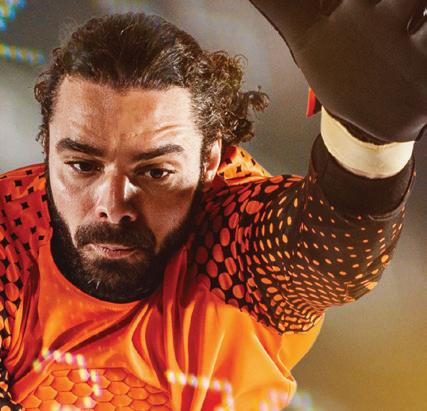


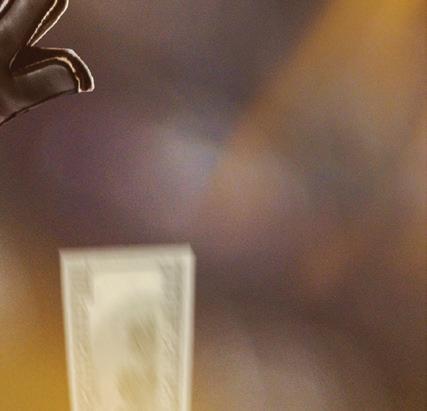



some point about responsible gaming advertising and, when it happens, “it will be ugly.”
This topic came up a few times in various panels. The general consensus seemed to be that sports betting, while popular and getting a lot of press, might not be the revenue generator many had hoped for. Bunevith said he feels like sports betting continues to be legalized in part because Americans know illegal sports betting is already happening in the country – it’s depicted in television and movies. But iGaming? It has no similar narrative around it, which he felt makes its legalization a tougher sell at the legislative level.
Indeed, in the ‘Future of Gaming, What’s Next?’ session, panelists were asked to speculate how many states would legalize iGaming in the next five to 10 years. Everyone was pessimistic about the chances of it spreading very far, despite being universally regarded conference-wide as the future of gambling in America and, perhaps more
importantly, a proven revenue generator. However, it was also acknowledged that iGaming faces a serious criticism when it’s discussed by legislators; the possibility that iGaming activity could “cannibalize” brick-and-mortar casinos. Melissa Blau, Director at iGaming Capital, expressed deep skepticism of the cannibalization argument, saying similar fears existed when iGaming was legalized in New Jersey and it never happened. She advised listeners to be skeptical of any studies saying that iGaming would hurt brick-and-mortar facilities: “These studies are flawed.”
Another discussion – common at gaming conferences – was around the future of cashless payments and the tremendous opportunities it provides. But time and again, speakers bemoaned the fact that cashless transactions in the gambling world are not comparable to cashless transactions in other industries. Said Michaels: “The product isn’t what you anticipate.”
Cashless transactions aren’t frictionless like they are when you buy your coffee using your phone at Starbucks. They’re clunky, tiresome and long. What’s more, Michaels said, some casino operations approach cashless transactions as an opportunity to make money, by charging patrons a cashless fee. He seemed to think that was short sighted, noting that Penn Entertainment doesn’t do that – and that customers wouldn’t expect to be charged for going cashless.
Pearl Aguinaldo, Senior Director of Marketing for the Agua Caliente Band of Cahuilla Indians, which operates three casinos in Southern California, presented on the Tribe's practice of holding esports tournaments in its casinos’ sports bars, which were designed for sports betting, but have proven to be the perfect venue for these gamers. She told attendees at the panel that their tournaments can garner 200 to 500 gamers, making for a windfall for the food and beverage department. What the Tribe didn’t expect is that some of their top 20 gamblers would stick around to watch the esport contests, suggesting that esports offers another entertainment option for casinos for high rollers.
Aguinaldo said that for other casinos looking to get into the esports game, it’s important to be “authentic.” Gamers need a space “where they feel comfortable,” she said.
On a final note, Darwin Braunagel, a Senior Manager of Business Development at Eide Bailly Technology, spoke in his panel, ‘Game Changers: Exploring AI and the Technologies Redefining Gaming,’ about the perpetual concerns about cybersecurity in the gaming industry. He noted that there are roughly three and a half million job openings in cybersecurity. He said there is a hope that AI could reduce the need for cybersecurity personnel, if we can get it the technology to where it needs to be, to be effective.
“SPORTS BETTING CONTINUES TO BE LEGALIZED IN PART BECAUSE AMERICANS KNOW ILLEGAL SPORTS BETTING IS ALREADY HAPPENING... BUT IGAMING? IT HAS NO SIMILAR NARRATIVE.”





















GamingAmerica
regular columnist, dissects the new strategic dimension in hospitality development.
From the earliest casino in Venice in 1638, to the palaces of modern Macau, all over the world casinos have sold one thing; the opportunity for players to play games of chance, games of skill, and to take risks betting against the odds. In a world that has changed in almost every way, the games of cards, dice and spinning wheels that have offered a unique adrenaline thrill to millions of players have not. What has changed, however, is the customers that play them, the places they go to and the way they engage with the games.
As we in this industry know, the rapid advancement of technology and proliferation of land-based gaming has rendered the shape of the industry practically unrecognizable from 30 years ago. The mechanical marvels of slot machines now possess less technology than the phones players carry in their pockets and sports betting counters have been replaced by apps
that are instantly accessible. Where once a casino conjured images of a smoke-filled pit, across the globe, entertainment palaces are now achieving record gaming revenues and unimaginable non-gaming performance. Las Vegas is at near record visitation – with an entirely unpredictable customer profile.
Let us go back to what we call the“Golden Age” of Las Vegas casino development. From the late 1940s and 1950s, the casinos themselves were formulaic, offering casino games, entertainment, food and beverage and, most importantly, hotel rooms. It was the remote location of Las Vegas and the requirement of the hotel that altered the way casinos evolved in north America.
What the relative remoteness of Las Vegas provided were the two things that casino operators need for success – time and space. Being far away from home, there is
“GEN X HAS GONE THROUGH THE GREAT RECESSION AND, ALONG WITH MILLENNIALS AND GEN Z, FACED POLITICAL AND SOCIAL UPHEAVAL, HISTORIC LEVELS OF SCREEN-BASED ENGAGEMENT, AND THE CONSEQUENCES OF SEPARATION AND ISOLATION DURING THE
COVID-19 PANDEMIC YEARS.”
greater time for customers to spend in a resort, and the sparse desert town offered sizable parcels of land that could be built and programmed to attract customers. Las Vegas’ time and space allowed operators to garner revenues that were not possible in other places.
Early casino development strategy was predominantly top-down. The resorts were shaped by the owners or key managers, many of whom where gamblers themselves, or shared many commonalities with the customers they sought to attract; therefore, they programmed what would attract gamblers; white men between 40 and 60 years old.
Those customers had gone through the Great Depression, maybe two World Wars and were seeking a sense of escape from rapid suburbanization. Inspired by European casinos, such as The Kurhaus, and incorporating Miami and Californian


elegance and post-war perceptions of luxury, we saw golf courses, lounges, gourmet dining, entertainment, indulgence and glamor.
In the early 1960s, Sinatra added style; the mid 1960s, Sarno added spectacle; and by the late 1960s, Kerkorian added scale. That’s what the customer wanted and that’s what Las Vegas got. Fast forward to the 1980s and 1990s, Steve Wynn had analyzed, codified and structured the style, spectacle and scale, and The Mirage synthesized the offering, setting the megaresort development template. The following boom catered for American Baby Boomers aged between 40-60 years old, the largest demographic and one rapidly generating and accumulating wealth. It was this customer that was also coming of age in the time of the first generation of Tribal development across the USA.



exclusive, with 1998’s Bellagio the first megaresort for wealthy folk, but Hard Rock, Palms and Excalibur among many of new additions to the market, each with a specific segmented customer in mind. As the Baby Boomer moved out, their children moved in as Encore, Aria and The Cosmopolitan of Las Vegas dominated with Generation X customers, who today range between 40-60 years old. It is hard to believe, but as the older members of Generation X are eyeing retirement, the Millennial generation (19811996) is fully in range, aged between 28-43, and is joined by early Gen Z (or Zoomers) in finding Las Vegas to be as compelling a destination as their grandparents once did.
For many years, there was a complex relationship between Las Vegas-centric operators and Tribal and regional gaming. The earliest Native American iterations grew from enhanced bingo halls, purposed to allow customers to play gambling games on Tribal land. After the Indian Gaming Regulatory Act of 1988, we saw the likes of Foxwoods and Mohegan Sun emerge, which leaned on Las Vegas’ megaresort model, plus moderate expansions across Tribal lands. In 1999, Wynn’s Mirage Resorts opened the luxury resort, Beau Rivage in Biloxi, the largest hotel in the country outside Nevada. The early years were challenging.
Due to the rapid growth of visitation to Las Vegas, the market began to specialize and segment, narrowing from inclusive to
The recently published LVCVA 2023 visitor profile highlights the ongoing success of Las Vegas’ operators in attracting the next generations of customers while maintaining the loyalty of Gen X as the Boomers age out. By any objective measure, Las Vegas casinos have succeeded in multi-generational business transition, where many other industries have failed.
Las Vegas operator, Boyd, which had focused on the locals market, expanded its customer intimacy (and high-repeat business) model nationally. Memphis-based Harrah’s developed a national network of regional properties, which ultimately led to investment in Las Vegas at The Rio and then Caesars Palace. Dozens of regional operators emerged in specific markets, notably Penn, Ameristar, Pinnacle,


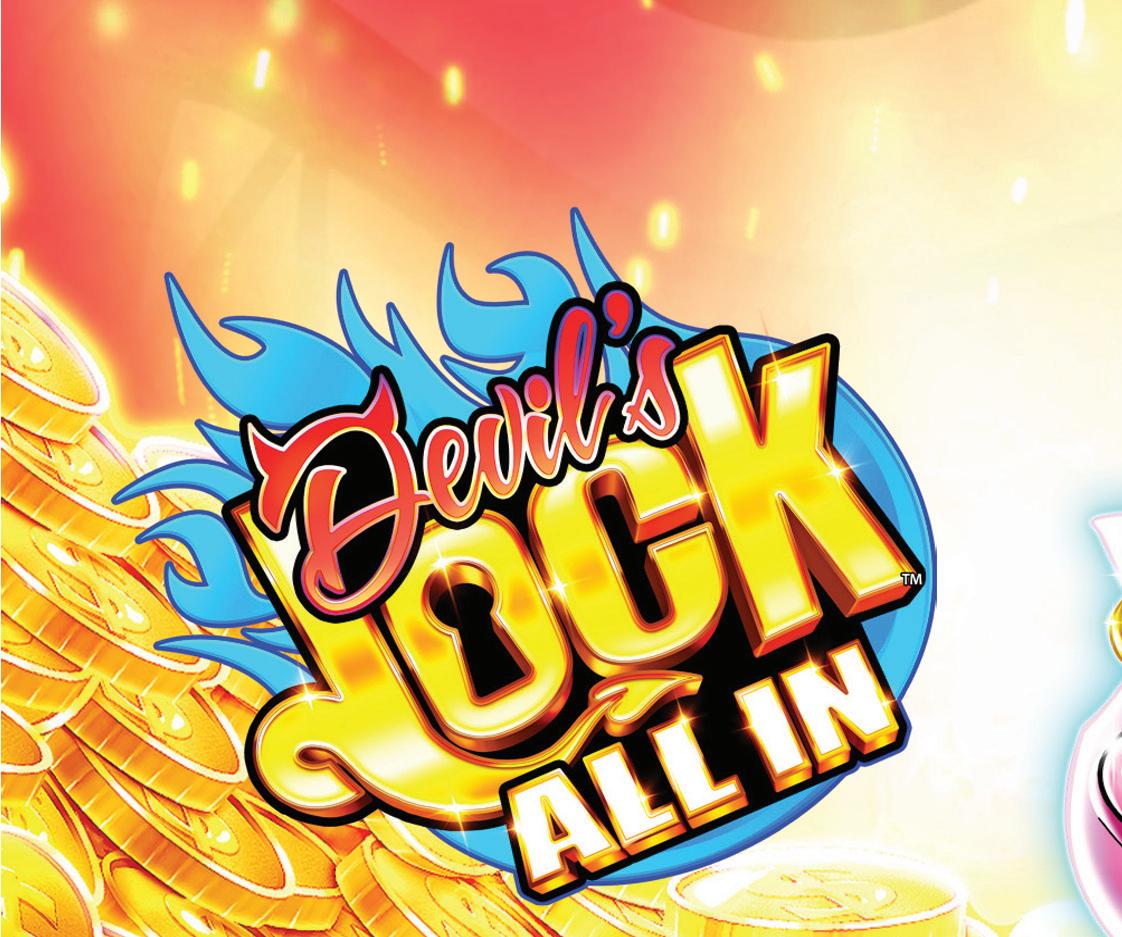



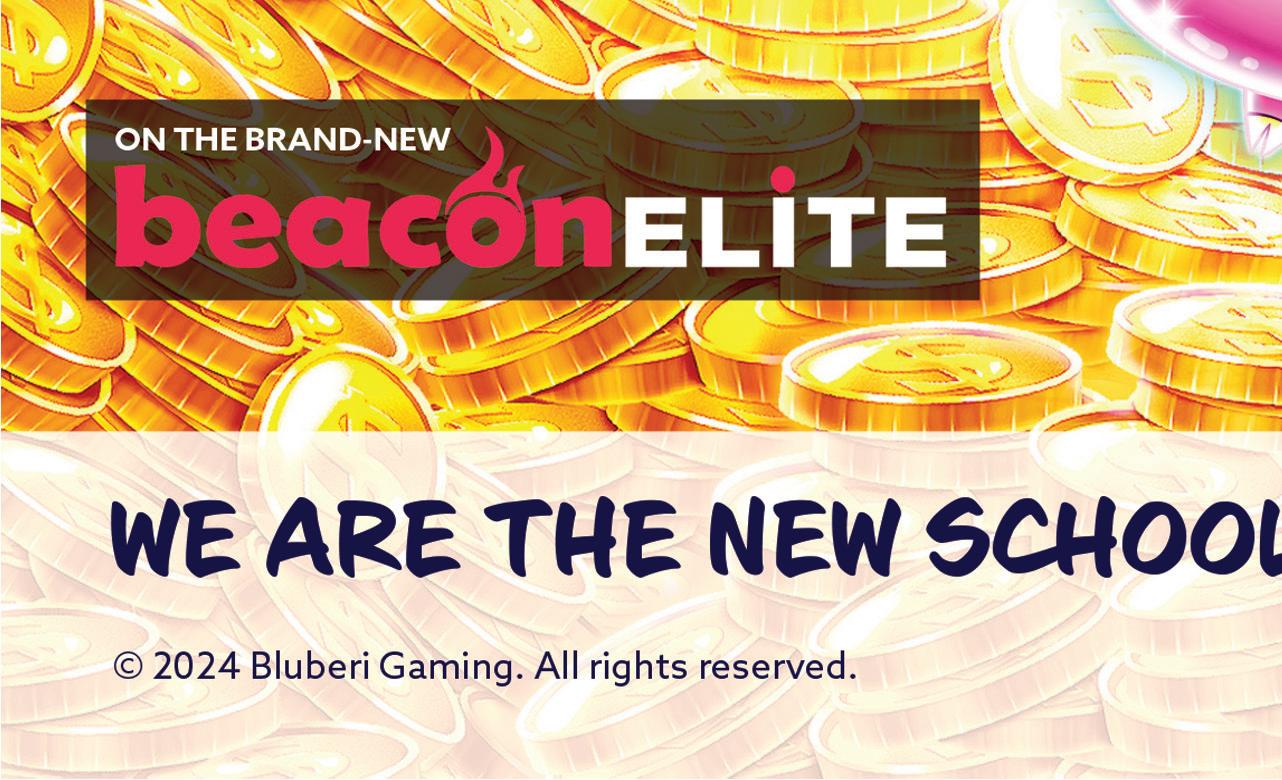











Red Rock, Eldorado. These properties focused predominantly on gaming customers in the Baby Boomer generation, with non-gaming revenues a fraction of what was being realized in Las Vegas. By response, and as Tribal resources increased, the emergence of true destination resorts, such as Pechanga, Thunder Valley, Viejas and Yaamava’ in California, and Winstar, Durant, Soaring Eagle and the Seminole’s Hard Rock in Florida, saw Tribal properties become the largest and most profitable resorts in the nation, diversifying revenues and appealing to both Boomer and Gen X customers. The time and space equation changed further.
from one customer to the next generation. Some have made it, others have not. The answers are not formulaic and deeper analysis into offering and customer alignment is often required.
With over 30 years of research, Rust begins with mathematical formulations on investment levels to increase customer loyalty and retention, to the use of AI in customer engagement. His work is highly relevant to the casino industry. However, Rust also writes that not all customers are equal – and that identifying the most desirable, profitable or relevant customers is of high importance.
The most successful businesses – and casinos more than any other – derive strategic competitive advantage by achieving customer loyalty. It is with this consideration that developing a lifetime relationship with customers is vital for casino success. In Las Vegas, engagement with the customer is starting earlier than ever, but the loyalty drivers that once dominated are changing.

travelers to Las Vegas

Many of the older Tribal properties have diminished in relevance and revenues, as the newer, amenity-laden resorts – many with hotels – have supplanted them. Las Vegas operators, Wynn, Caesars and MGM, have also invested in regional and urban markets, exporting some of the spatial strategies employed in Las Vegas, but without the associated time factor that travelers to Las Vegas enjoy. There is an ongoing debate about how Tribal and regional properties are transitioning
the same sentence; but Binion’s
It is somewhat curious that convicted criminal Benny Binion, who once operated Binion’s Horseshoe in Downtown’s Glitter Gulch, and highly respected academic Roland Rust should be mentioned in the same sentence; but Binion’s intuition and Rust’s empirical rigor come to the same conclusion. “If you wanna get rich, make little people feel like big people... good food cheap, good whiskey cheap and a good gamble.” Binion believed that the key to running a casino was to give your customers (primarily white, male gamblers, in Binion’s case) what they want, emotionally and financially, and they will come back. In multiple papers and decades of analysis, Rust has researched customer satisfaction, customer centricity and customer retention to determine customer lifetime value and profitability.
In late 2023, a report by the UNLV’s Bo Bernhard and Quinton Singleton titled, “Introducing The Fun Economy” was published. Notwithstanding the fact that gambling is a “serious” pursuit in some cultures, the duo note that by combining and classifying Tourism, Sports and Entertainment under a single designation, the “Fun Economy” is valued at $17.3trn, equating to 13.7% of global GDP. They state that global tourism is growing at 5.8% per annum, sport revenues increasing year-on-year and entertainment, in the forms of video gaming, casino gaming, sports betting and live events, are all seeing sector growth. The growth of this sector shines a light on identifying the needs of many under-40s. Gen X has gone through the Great Recession and, along with Millennials and Gen Z, faced political and social upheaval, historic levels of screen-based engagement, and the consequences of separation and isolation during the Covid-19 pandemic years. Contemporary research also shows that Millennials and Gen Z, who have both a












heightened emotional intelligence and an inflated level of expectation (having consumed a daily feed of social media imagery and staged narratives) are seeking immediate gratification and a need to visibly share their experiences –either positively or negatively.
It would therefore seem that the highly programmed and experientially concentrated environment found in Las Vegas is having some resonance. Indeed, here visitors are bombarded with multi-sensory engagement, forced interactions with strangers, play interactive games with humans, experiential discovery, witness the best shows and entertainers in the greatest venues and communally celebrate or commiserate at sporting events. Moreover, with friends and family more disparate, the remoteness of Las Vegas once again provides that central point to celebrate those key life events that are of increasing importance.
Based on Las Vegas’ recent success,
have we found the secret to attracting the next generation of customer?
As a development and strategy professional, I obsess about the concept of time and space, not just the economics of resorts and casinos, but what we need to attract the customers we seek, and ensure our projects are successful and sustainable. I think about what our customers will do, what brands we want to align with, what amenities we need, how spaces make us feel, hoping to align the physical environment to the emotional needs and loyalty drivers of the customer.
Whether the casino is in Las Vegas, Louisiana, London or Phnom Penh, the customer centricity concepts found in Binion’s saloon or Rust’s classroom are essential. However, investing significant capital into a new project, understanding


the next generation of customers should also be paramount in our thinking. For those working in casino development, operations and strategy, or have an interest in this sector, these are my summarized thoughts:
1. Who is our customer; what are their needs? From the early ages of Las Vegas, providing escape from suburbia, injecting style, spectacle and scale, to entertainment, empowerment and ultimately self-actualization, the topperforming casino resorts have always been about more than the casino floor. The best properties tell us a little about the person that creates them, but more about the customers that use them.
2. The next generation of customer is dominated by Millennials and Gen Z. This group has a higher emotional intelligence than their grandparents. Yes, they crave the


action, but if you can make people smile, laugh and be happy, they will love you back. Create belonging, positive reinforcement, community and life-affirming moments. That's what we do in Las Vegas. It can be done anywhere with a cohesive strategy.
3. If a customer comes once, that’s great, the marketing has worked. But in our business, strategic marketing is all about customer identification and understanding loyalty drivers for repeat visitation. In a competitive environment, you can’t be all things to all people. Choose your customer wisely. Whether it be good whiskey, cheap, or structured benefits; if we don’t identify our customer and put loyalty front and center, nothing else counts.
4. Las Vegas has always existed in both reality and fantasy. For today’s customer more so, as images of the city appear on sportscasts, music videos,
social media, influencers and YouTubers. Digital platforms, brand identification and alignment are crucial. Anyone with a smartphone accesses content and –geography allowing – can place a bet on tonight’s game. Today’s – and more importantly – tomorrow’s customer lives in a hybrid world of digital and analogue realities. If you aren’t engaging and building relationships with your customer before they set foot on property, someone else is.
5. For many years there has always been an element of fear about the sustainability of land-based casinos. In Las Vegas, we were fearful of Atlantic City, expansion of Tribal gaming, and then digital gaming being the end of the city. The offer has innovated to be the global center of the “Fun Economy,” which will only grow in years to come as the next generation of customer continues


their journey. Others need to watch Las Vegas carefully as the world will inevitably become more competitive, and how resorts adapt to this will be instructive.
There is still a belief in some quarters that hospitality development is simple; if you build it, they will come But as we have seen, if the offer is not strong enough, simply put – they will not. Modern hospitality development isn’t about gaming; it’s about understanding people and managing space and time. If you get that right, they will come – and keep coming back.
Oliver Lovat is the CEO of The Denstone Group, which offers strategic consultancy in casino and hospitality development. His research topics are Las Vegas Customer Behavior and The Evolution of Competitive Strategy Within Las Vegas Casino Resorts.


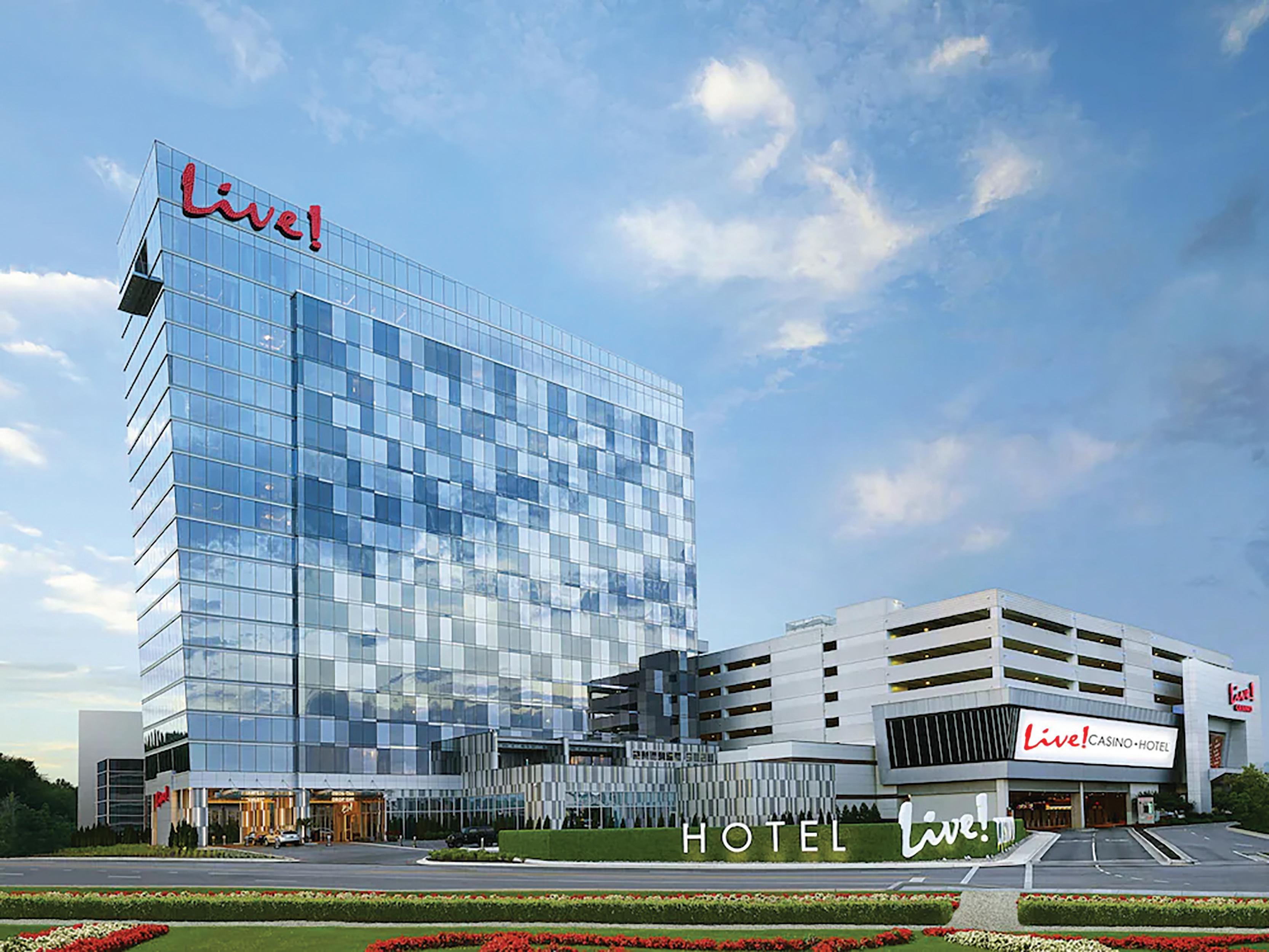
Ryan Eller, EVP of Live! Casino & Hotel Maryland, spoke exclusively with Tim Poole about the impact of Las Vegas on regional casino models, and the importance of creating memorable player experiences.
Let’s walk through your career. In your own words, can you talk me through your journey?
I went to the United States Naval Academy for my undergrad and from there went into the Marine Corps. I spent about eight years in the Marine Corps and had the opportunity to go to Harvard Business School. I enjoyed the Marine Corps for a lot of the same reasons that brought me to the casino
industry. It’s a people’s business, if you want to call it that. There are a lot of like-minded individuals, but it’s also dealing with challenging problems and having to lead teams through that entire process. One of the things business school taught me was the analytics that goes with finance. That was very intriguing and intellectually stimulating, so I found myself in a quandary as to what career path to pursue. Then there
was a veteran who reached out to me and said, “You might actually be interested in the casino business.” It’s got a crossroads in professional experiences where you get to leverage the intellectual stimulation that comes with the analytics and math that goes with financing, while at the same time, you also need to manage large groups of people. There aren’t that many people who are used to doing both.
I joined Caesars Entertainment right before the Lehman Brothers crisis. That was disruptive to the entire marketplace. I joined a Tribe in Alabama, which was a great experience, then I moved to be CFO of the Mississippi Choctaw. They had some challenges. In the past, they had a management team that had several indictments from federal authorities for a variety of different reasons, and they needed some leadership to come in and clean things up. I helped to turn that around, with great financial and organizational success for the welfare of the Tribe, then left for Genting.
Genting is a massive South Asia-based multinational company. They began their experience in the US with commercial gaming and through Tribal gaming by developing Foxwoods, interestingly enough. I joined initially as CFO, but the business grew throughout the US, which allowed me the opportunity to become President of New York Operations. I was then asked by the Chairman of Genting Group to join Empire Resorts as a CEO. That’s a smaller NASDAQ company that had secured the rights to a casino licence in Catskills, upstate New York. After a couple of years, I came back to find this great opportunity with Live! Casino. It is one of those organizations I was intent on exploring opportunities with because it’s got unique DNA. It’s a regional casino operator but it’s family-owned, so it’s small and all entrepreneurial.
You’ve clearly experienced many different sides of the industry; gaming, non-gaming, start-ups, mergers, being CEO... financial departments. I’m interested in how you’d compare working for a Tribe and the commercial side. How do they vary?
Every organization is different and, with that, every Tribe is different. My time with the Poarch Creek in Alabama was vastly different from my time with the Choctaw in Mississippi. One of the reasons why Tribal gaming is not dissimilar to an enterprise is that they’re both family-owned, right?
“ IF YOU GO ONTO A CASINO FLOOR NOWADAYS, YOU’LL SEE THE HEIGHTS OF THE SLOT UNITS ARE PROBABLY DOUBLE WHAT THEY WERE 15-20 YEARS AGO .”
It’s just a large family. But it’s definitely not similar to being CEO of a public company. There’s a significant difference between those two. But, for closely held familydriven businesses, it’s quite similar because there is a community that goes with it. It could be quite concentrated but, still, many of the same things are in place, which is to ensure the perpetuation and welfare of the community. It’s intended to support key stakeholders, which, in the case of a Tribe, are Tribal members. In the case of a family business, it is the family members, right? It is those relations. It’s almost gratifying in a way that you can see the benefits of the labor and how it affects a much larger community.
But the thought process that goes into decision-making is similar to the governance and routines that are put in place by family businesses, which have an interest in good governance. Tribes do it on a much vaster scale. In many cases, the stakes are even higher. The entire community is dependent upon the commercial side. It’s vastly different than when you are beholden to shareholders and investors, when it is less oriented on generational wealth and the nature of desires in the community, so much as ensuring that we meet the near-term and immediate desires of our shareholders and maximizing value; so purely capitalistic.
You need to understand that sometimes returns mean different things in a family business than it would in a public company, where other factors come into assessing that risk-reward thought process. As a finance-minded individual,
it’s helpful to be dynamic, being able to pivot between those two environments and understanding the interests of your key stakeholders, your ownership and shareholders. You need to be flexible.
The Live! Casino in Maryland, I imagine it’s your pride and joy. Can you tell us all about the property?
Like I said, economically, its performance is outstanding. It’s in this very robust market and has built a unique position in that market over the last 12 years. From a numbers standpoint, if you look back at 2023, we finished with $503m in slot revenue, nearly $210m in table revenue and we also finished the year with almost $200m in online revenue from our partnership with FanDuel. In 2023 alone, it’s almost $900m of revenue associated with that one casino, which is pretty phenomenal.
I think one of the things that make companies unique and what makes Live! as a brand unique is that we could do something that is part of our DNA that other operators simply can’t. That is – we are the casino equivalent (despite the $900m revenue) of your corner community bar destination. This is where people feel comfortable. Those relationships are from an entrepreneurial, family-owned business that is multigenerational and thinks multigenerational. It resonates in local and regional communities who identify with those relationships. When we look at the casino business, it’s a commoditized product. We all have the same slot machines.
We might merchandise them differently – I think we merchandise better than anyone – but the experience you have with any brand is based on anemotional connection. By that, I mean we have activities and entertainment as part of the Live! brand and excitement resonates from that. While it doesn’t need to be on a massive scale, we do things on a massive scale. On any Saturday or Friday night, you’ve got five or six different live bands on the floor in our venues, all offering something different to people who are looking for something different. You’ve got over a dozen restaurants that offer a different experience, all of which are supposed to resonate with that specific customer in a specific way. They’ve got to drive a little further, maybe they also like to visit other casinos, but they especially like to visit us because we have that unique, aligned and emotional connection by virtue of what we offer and the brand we have.
It's funny, you mentioned three points that lead into my next three questions, without having seen the questions beforehand! Firstly, you mentioned the merchandising of slots. What struck me looking at some recent results was that you, overall, were just a little bit behind National Harbor for a recent set of monthly revenue figures, but the number of slots you have dwarfs anyone in the state.
From a property standpoint, we have a slight difference with National Harbor, which is our gaming floor. Our structure for the casino itself is bigger. It allows us to have a greater number of slot machines, so if we look at those gaming numbers, we generally exceed the revenue number for MGM. We’re about 38% of the entire Maryland market, while MGM is a couple percentage points below us.
The reasons for that can be seen as a chicken and egg argument. It’s not capitalefficient to have more slot machines than you need. We believe we have the right number for us, but one of the things that allows us to do is have greater variety,
greater access at all hours and allows us to provide people with product options during peak periods that they might be constrained in another environment. In my opinion, you can’t do that adequately for the market size of our position with less than the 4,000 slot units that we have. It’s constant. It’s an evolution. It’s a struggle. It’s capital intensive, as well, but it’s one we probably do better than anyone.
There comes a point where there are too many units, too... being too capital intensive brings diminishing returns. From what you’re saying, that’s something you’re on top of. Of the thousands that you have, are there any that stand out?
Without calling out any particular titles, there are always machines leading the way. One of the things all slot vendors and machine manufacturers do very well is merchandising their units to the point where they’re vying for larger and larger floor space. If you go onto a casino floor nowadays, you’ll see the heights of the slot units are probably double what they were 15-20 years ago. Part of that is creating an ability to crowd out other things. I’d align it to going into a grocery store now versus 20 years ago. You go in and if you were looking for cereal, you’d have one frosted flakes. Now, you’ve got 15 different kinds of frosted flakes and they’re all on that shelf. It crowds everything else out. Your choice is now, “Wow, this is an impressive variety, but am I going to stick with the brand I am loyal to or am I going to go to the next version?” It is consuming bandwidth in a productive way, because people love the variety. They like the experience. It’s building on the success they had in a flavour or product they happen to like. Slot machines are the same. They are using merchandising, lessons learned from modern retail experiences and applying it to the casino floor.
As a result, we see a multitude of whatever is new and successful. But we don’t want to disenfranchise players who have an affinity for their older favorite games and might not migrate to
newer, more flashy themes. We’ve got this spectrum of customers and we try to merchandise so that it appeals to each one. I’m sure many vendors would love that the faster we migrate, the more we convert and have that capital conversion cycle. We buy more, which is probably better for them. Of course, that is with the fact that we’ve got a very loyal, resilient base of residents with certain products we want to keep.
We mentioned National Harbor earlier on. Melonie Johnson, who led that property, previously spoke to me about the regional model. You have Las Vegas properties where, nowadays, just 30-35% of revenue is from gaming. Meanwhile, in a regional model, it’s far more gaming intensive. Is that still the case for Maryland and is that changing?
Good question. It's interesting you mentioned Melonie; when I took my first job with Caesars, Melonie worked in Memphis with me. She and I know each other from way back, from the beginning of my career, and she is a great person. Whatever she said I’m sure was very insightful and completely accurate! But it is interesting. Las Vegas has migrated to more and more deriving their revenues from hospitality and the non-gaming side. The population of foot traffic drives the utilization of food and beverage covers; so think of a cruise ship or any resort, there is a virtuous cycle to putting bodies in the resort. Whatever gets them into the resort might be a different motivator than in the past, primarily gaming.
For Live! Texas, Saint Louis, Kansas City and Philadelphia, they’re not casinorelated. They’re these massive mixed-use developments that have a great deal of success. There’s a synthesis in Live! where it looks at a regional model that combines those two things and, from where I see it, I do see us migrating in that direction. It is not going to be akin to Las Vegas, because Las Vegas is destination travel, so the balance is always going to
be different. But the things that work in Vegas on a regional scale will work in regional casino destinations. We already see that as one of the reasons why MGM is successful to a certain extent. One of the reasons I know Live! is successful in Maryland is because we’ve developed a regional destination.
With that in mind, we have a fourstar hotel, a massive event center, an entertainment centre called The Hall, which is where we have concerts, large conventions and catering sales. That brings people into the hotel, which brings people into this diversity of restaurants with food and beverage, and some of that spills onto the casino floor. But to those groups, the casino is an amenity, just like one of the bars or restaurants would be. Whereas for the core casino guests, the amenity is one of the other businesses. As you develop the verticals, which are previously considered ancillary to the gaming floor, you enhance the very benefit of the gaming floor. So they are mutually beneficial and there’s going to be more investment in these outside the destination markets, in regional markets, to perpetuate that going forward.
That’s everything I wanted to ask!
But Is there any last message you want to get across?
One of the things we continue to contend with in Maryland is what to do about internet gaming and the proliferation around iCasinos. We continue to contend with what legislation might look like and the threat an iCasino might pose to our business model. From the company standpoint and gaming in particular, we have a great deal of concern over what that might mean for our particular brick-and-mortar casino. Going forward, there’s a great deal of perceived goodwill and benefit from what we bring as a casino operator. Where we operate, we bring a great deal of investment, economic development, jobs, tourism and destination travel. Those things are valued in every regional casino.
Now there’s a risk from iGaming that is, I think, holistic. Holistic in the fact that
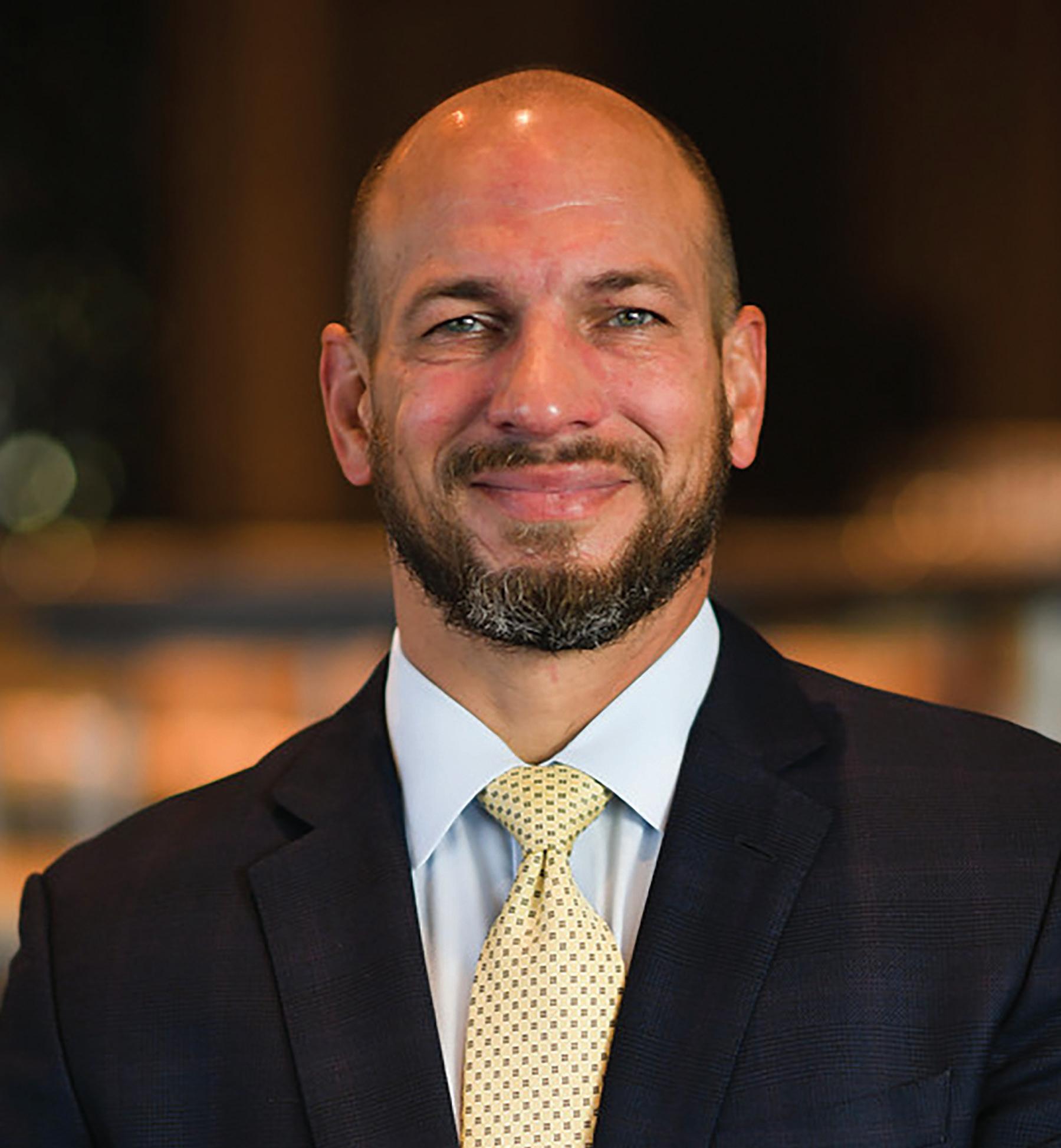
“ WHEN WE LOOK AT THE CASINO BUSINESS, IT’S A COMMODITIZED PRODUCT. WE ALL HAVE THE SAME SLOT MACHINES… BUT THE EXPERIENCE YOU HAVE WITH ANY BRAND IS BASED ON AN EMOTIONAL CONNECTION.”
the proliferation we’ve already seen brings concern over how marketing, operations and interactions happen when gaming is distributed into mobile devices. We believe this might be an existential threat, just from the goodwill of the regulatory environments, in the community we serve and very specifically in the Maryland market. It’s one that threatens the jobs and the billion dollars of investment in
the continuous virtual cycle we have here, which is something that is the basis for why our family business is so successful; and why we think we have this great relationship where we are providing old value as a casino operator, as a real estate developer and then migrating. That’s one of the concerns we have as we look strategically going forward as a regional casino operator.







Gaming America speaks to RLX Gaming’s new CEO Martin Stålros, who is due to succeed Simon Hammon in October 2024, about the company’s entry into the US in late 2023.
How do you reflect on RLX Gaming’s entry into US markets?
The US offers opportunities and strategic growth potential that are incredibly exciting for the company, and our successful entry demonstrated our ability to grow further beyond Europe.
The process to go live by 2023 was driven by a high level of focus from our team, and together we made sure no stone was left unturned ahead of our launch in New Jersey with BetMGM.
Our primary objective last year was to lay the foundations for a strong launch in the region, highlighting the dedication with which we set our US ambitions and how much we value the market potential. We continue our work to strengthen RLX Gaming’s brand presence, expand operator reach, increase player awareness of our outstanding games and continue the company’s exciting journey in North America by exploring expansion into other states.
Which games have gained the most popularity in the US?
Despite it still being early days, we

have observed similarities between Europe and the US from a performance perspective and also in terms of what ‘sticks.’ Audiences seem to be


resonating with the same content and, overall, we are highly encouraged by the trajectory.
Although at present we are live with a curated selection of our extensive portfolio, games such as Great Western and Temple Tumble are already seeing strong engagement, and our plan is to launch many more existing titles, as we continue to learn about the market and its preferences.
In a previous edition of Gaming America, you touched on the popularity of table games among American players. How is RLX looking to leverage this opportunity?
MARTIN STÅLROS
RLX Gaming CEO
Our overall approach and positioning of blackjack and roulette within the US mirrors what we do in Europe, where our games have successfully taken significant market share, while also offering operators a reliable and cost-effective way to engage their players. Our table games are high-quality, competitively priced, commoditized titles that operators can justify giving an additional push to.





You launched firstly in New Jersey, but which other states does RLX plan on entering?
New Jersey represents the beginning of RLX Gaming’s journey in the US market. Following a strong start here, our continued growth plans within the state remain a priority, including exploring further operator integrations, delivering new products to the market and building player familiarity with our games.
Other states feature heavily within our plans for strategic growth in the US, including Pennsylvania and Michigan. We are extremely excited about our upcoming market entry roadmap, and our teams are working diligently to ensure our brand delivers on all fronts when we are ready to go live with our content in these states.
You have been present in Ontario, Canada, since 2022. How big is the potential of the market there?
Ontario was a strategic North American entry point for the company and provided us with a strong base. The market has shown fantastic growth potential and



quarterly developments since regulating, and as such offers a great growth opportunity in its own right. Ontario contains a mix of European operators and North American ones that share distribution in the markets of New Jersey, Pennsylvania and Michigan. This is of course valuable in shaping conversations, as we look to make our debuts in additional states.
RLX has signed several partnerships in recent months, but which has been most important?
Naturally, our go-live in New Jersery with BetMGM was pivotal; however, every operator we partner with as we enter a new market is extremely important, particularly during the initial stages of establishing our brand and increasing awareness. We are grateful and excited to all our operators who have embarked on a partnership with RLX Gaming and embraced our product offering.
Money Train 4 (Great Western 4) won the Online Slot of the Year at the Global Gaming Awards in

London back in February. How pleased have you been with the overall performance of the game?
Great Western 4 (known as Money Train 4 outside of the US) is a beautifully crafted, highly anticipated, feature-rich title, embraced by players worldwide. We are grateful to both players and operators for supporting this legendary release and helping build excitement around the launch. This made all the hard work the team put in worthwhile.
The Money Train franchise has arguably been one of the biggest in slot history, and it is important to bear that in mind by not only celebrating Great Western 4/ Money Train 4 in its own right, but also using the opportunity to assess success from a holistic perspective. For RLX to have this in our arsenal is wonderful! Witnessing the game grow to four titles, each building on the previous iteration and keeping the audience entertained, is a true testament to its longevity. We knew when the flagship game was first released that we had something special to build upon and, four games later, our stance on the franchise certainly has not changed.





















Online poker has been on a rollercoaster over the past few years. Several big brands were bought by large operators and later faded, but does correlation mean causation here? And can we apply those lessons gaming-wide, not just with poker? Gaming America explores...
The idea of playing poker online isn’t new by any means. The first real-money game was played online at Planet Poker on January 1 1998, but poker has gone through several lifetimes since then. The poker book, the poker crash and the neo-poker age we find ourselves in now.
Let’s go back to the beginning, just for a moment. The year is 2001. The first Harry Potter film has just been released, Apple is advertising its first-ever iPod and people are sceptical that iTunes and music streaming will even be popular – after all, everyone still has their favorite albums on CD or cassette. Home computers were starting to grow in popularity, too. 2001 was the


year that Windows XP launched, finally updating from that dull grey aesthetic to the iconic vibrant blue toolbar and green rolling hills background. On the depths of the web, a certain trend was being born too: online poker rooms.
Quite a few major online poker rooms launched this year, surprisingly enough, including PartyPoker, Pokerstars and Americas Cardroom. The websites were basic, as they all were back then, but people could play real-money poker from the comfort of their computer chairs. The allure was clear. You didn’t have to travel down to a local casino and spend a small fortune on food and drinks while out. Not only that, but you could also keep an eye on kids while at home and catch up on housework – the new possibilities really were endless.
The Golden Days of poker. When Chris Moneymaker, a mere accountant at the time, entered an $86 satellite tournament on Pokerstars in 2002, there was no way he could know he was about to change the poker world forever. He managed to fight his way all the way through to the 2003 World Series of Poker (WSOP) Main Event, which was his first-ever live tournament. It didn’t matter how slim his chances were. Moneymaker entered for $86 and walked away from the Main Event as the winner… for $2.5m. And just like that, poker became anyone’s game.
The “Moneymaker Effect” has been widely lauded as the birth of modern poker and it’s easy to see why. The 2003 WSOP had 839 entrants, but by the next year, this had tripled to 2,576
players. By the 2006 WSOP, there were a total of 8773 entrants.
Not only was there a poker boom, but a massive demand for poker media, and companies were doing everything they could to keep up. The freeroll tournaments would fill up within a minute of dropping, with forums dedicated to people speculating when they’d go live, which sites you’d most likely get a seat at, or even putting friendly bounties on their friends who managed to get a seat while they didn’t! There were podcasts covering the latest tournaments, pokercasts on Ivey, Hellmuth, Esfandiari, Laak, Moneymaker, Matasow, Brunson or Hansen, and live stream highlights were posted across all the different platforms.
Anyone who was online in the 2000s can testify to how much these forums created a sense of community. Poker was fun; it was light. People were posting and asking whether they were right to go all-in against Aces, just because the strategy around the game hadn’t matured yet and the playerbase was so new. It was accessible to anyone and companies knew that.
That’s the most important thing, though. All of this created hype around poker. The podcasts and forums created a buzz, which only drove the momentum for the game. Even if people didn’t actively play themselves, it was exciting to follow the big tournaments, especially during the era of Isildur1!
Unfortunately, all good things do have to come to an end, including online poker. When the Unlawful Internet Gambling Enforcement Act of 2006 (UIGEA) became law in the US, this almost singledhandedly destroyed poker. Several brands, such as PartyPoker, left the US completely, while the founders of PokerStars, Full Tilt Poker, and Absolute Poker were indicted for bank fraud and money laundering in what became known as Black Friday in poker communities.
Against all odds though, American online poker survived. Over the next few years, companies would return as UIGEA lost power. PartyPoker came back in 2014. PokerStars broke records with its December 2009 $1 entry online tournament, with 149,196 entrants. This was broken by the brand again in 2011 with 200,000 players, and once again in 2013 with 225,000 participants. Everything was pointing in the right direction, it seemed like US poker might actually thrive.
While the passion was being brought in by the players, it seems like the poker crash had knocked the wind out of some of the companies running the online poker rooms. Full Tilt Poker was there from the start, and even now, its name is synonymous with online poker. However, Full Tilt Poker closed its doors forever on May 17, 2016, when it was bought alongside PokerStars for $4.9bn. The buyer, Amaya Gaming Group, merged the two together, with Full Tilt now redirecting to the PokerStars site. This would be the first injury in the industry, but it wouldn’t be the last.
PartyPoker was merged with bwin in 2011 to form Bwin.Party Digital Entertainment, bringing with it the World Poker Tour (WPT) which it bought in 2009 for $12.3m. This conglomerate would then go on to be sold to Entain in 2016 for $1.6bn, but interestingly enough, WPT jumped ship just before the sale and moved to Ourgame International Holdings for a price of $35m in cash. Since these acquisitions, both have suffered. PartyPoker was once the largest online card room in the world, but its numbers have now dwindled to a fraction of what they once were. Meanwhile, the WPT has grown stagnant, with no increase in the “highest payout” between 2007 and 2022.
But not every poker site sold to a major company failed… right? PokerStars has had its own unique journey, starting off as a simple poker site launched in 2001. It faced heavy speculation at the start, as people wondered when it would submit an initial public offering or merge with a publicly listed company. Its value was
estimated at $2bn in 2006, making it one of the world’s largest privately held gambling companies. After it launched its mobile apps as early as 2012, it would overtake PartyPoker as the largest poker room in the world; with the latter only releasing its mobile app in 2016. The site invested heavily into its online platform, making deals with slot providers to launch an online casino alongside its poker; it launched a VR experience and some of the biggest tournaments the poker scene has ever seen… then in 2019 PokerStars was sold to Flutter Entertainment as part of a $6bn merger.
While it would be great to say that PokerStars stayed on top after it got sold to Flutter Entertainment, that’s simply not true. The current leader by many estimates in the industry is actually GGPoker, which is at the top of the player leaderboards without even being live in the US. GGPoker launched in 2014 for the Asian poker market and didn’t expand into Europe until 2017. When it faced strict regulations for the American market, it launched a separate company called ClubGG that would handle US-facing regulations and players. So, the milliondollar question is… Why is GGPoker so successful? And more importantly, what does this have to do with it still being a private company?
Well, GGPoker has been repeatedly found at what some might call “the scene of the crime.” This has nothing to do with crime itself, of course, but whenever anything happens, GGPoker is there. When the 2020 World Series of Poker tournament was cancelled due to global events, GGPoker was there with an offer to co-host it online. WSOP agreed, and the 2020 WSOP Online Main Event broke records for the largest-ever single online poker tournament. In fact, it was so successful that the series returned for an Online bracelet series in the years following.
This wasn’t all, though. When Ontario launched its regulated online gambling market, GGPoker was one of the first to
launch in the jurisdiction through a partnership with its new friend, WSOP. This would receive so much attention that Great Canadian Casino Resort Toronto was chosen to host the inaugural Canadian WSOP Circuit Event with GGPoker.
The average user experience on GGPoker has also been applauded. Rather than offering only Texas Hold’em, GGPoker offers Battle Royale modes, All-in or Fold, Short Deck and more. The operator has also put a focus on the community at the table, with options to react with emojis, reaction videos and even voice messages.
All of this has proven to be a great success, too. According to the latest figures, GGPoker has around 50% of the entire online poker market and is bigger than the next five operators combined. Is this specifically because it’s a private company? Well no, of course not, but being a private company means it doesn’t have to get approval from shareholders before it does anything. This ability to act quickly as a private company could be the reason it was able to step in to help out the WSOP in 2020, which was certainly a major catalyst for its success since then.
GGPoker isn’t the only poker company which has survived neo-online poker, though. One of the other companies is



Americas Cardroom, which rebranded to ARC Poker. This company was founded in 2001 and currently has Phil Nagy as its CEO.
He actually explains this perfectly himself: “I’m Phil Nagy, the Chief Poker Player at the Winning Poker Network. I say Chief Poker Player and not Chief Executive Officer because while I am the CEO, I’m a poker player first. It’s this type of thinking that sets the Winning Poker Network apart and has helped catapult us from the 46th-biggest poker network to 6th in just a few short years. I firmly believe in putting players before profits and building a poker network that’s by the people, for the people.”
Not only is ACR Poker led by someone who personally understands the poker scene, but this company hasn’t shied away from innovation either. In 2017, ACR Poker was one of the first on the scene to expand its payment options, adding over 60 different cryptocurrencies to its platform, amidst the Bitcoin boom that was taking over the world at the time. This would be extended in 2019, when it offered its winner of the Venom tournament $1m in Bitcoin, making this the largest crypto payment in history for an online gaming site.
It wasn’t just the weekly $1m guaranteed tournaments, nor the adoption of cryptocurrencies that gained ACR Poker respect with players. One of the biggest complaints against online poker sites are






that they’re rigged. We’ve all been there, we’ve all said it after suffering a particularly bad beat. But in 2019, ACR Poker took this into its own hands.
Not only did ACR Poker take proactive action against cheating, it also did this transparently. Of course, shareholders all over the world would jump at the chance to stop a company from admitting that it had cheaters on its site. But ACR Poker decided it was more important to respect player trust, especially when it comes to gambling. The company announced that it had closed several accounts, returned over $200,000 to users and established a separate $25,000 reimbursement policy.
It could be sheer coincidence that most of the poker sites which were bought by larger companies fizzled out or closed, but the numbers are also difficult to ignore. Full Tilt Poker closed, Absolute Poker went bust, PartyPoker is dwindling and PokerStars lost its top spot after being bought. Right now, the two poker companies that seem to be excelling aren’t under ownership from big gaming firms, but are instead self-led. While GGPoker used this to its advantage in making strategic company decisions without having to consult a crowd of investors, ACR Poker was able to understand exactly what the average poker player wanted.


Only time will tell whether this is just a wild twist of fate, where everything has lined up in a particular way regarding the big brands and the private ones, or if this has any real business strategy behind it. Poker has always been slightly different than other casino games; while blackjack and roulette have stayed the same for years, poker requires constant innovation. And if you’re not offering that new game type or tournament structure, someone else is. Ultimately, that’s likely what happened to the poker sites that got adopted by the larger brands: they were treated like a classic table game, rather than the unconventional cousin that poker is.





























































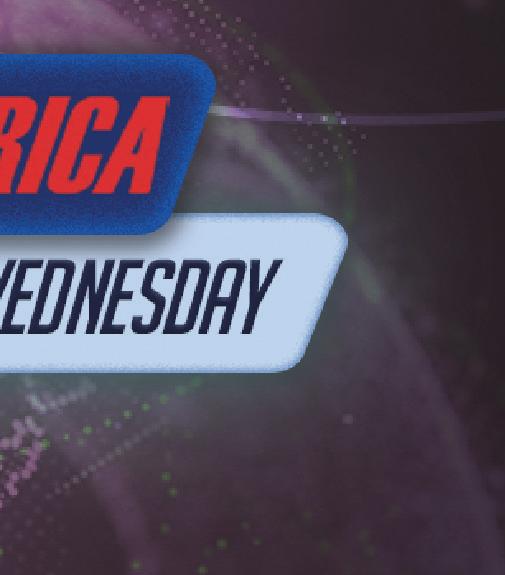

Industry experts answer Gaming America’s burning questions on all things related to AI in the casino industry, including SCCG Management, NIGC, OPTX and Sportradar.
















STEPHEN CRYSTAL Founder and CEO, SCCG Management
Stephen A. Crystal has spent over 32 years in all aspects of the casino, gaming technology, iGaming, sports betting, esports & sports entertainment industries. He has served as an attorney representing public and private gaming companies, Las Vegas casino owner & gaming executive employing thousands of employees, and an investor and advisor on over $2bn of project finance, mergers and acquisitions in the casino, gaming technology, iGaming, sports betting, esports & sports entertainment verticals.

EDDIE HALL IT Auditor, NIGC
Eddie B. Hall III currently serves as an IT Auditor at the National Indian Gaming Commission. Hall’s duties include managing and adjusting the workload of IT audits in internal control, conducting IT vulnerability assessments and performing training to accommodate the needs of the agency staff and stakeholders. Hall has been an IT professional for over 10 years. During this time, he has led management of security operations center (SOC) IT projects, software development lifecycle (SDLC) projects, systems compliance and auditing.

STEVE BRIGHT
VP of Data Science, OPTX
Steve Bright leads OPTX's Data Science team, which designs, develops, tests and monitors new Artificial Intelligence (AI) features for OPTX's data modules.
Prior to joining OPTX, Bright worked as a Data Scientist in many different industries, and has over 30 published papers in fields ranging from Experimental High Energy Physics to Pharmacovigilance (Drug Safety). He also has several years of experience applying Data Science to problems in the Gaming Industry, including Machine Learning (ML) algorithms to forecast and optimize slot floor performance.
















PAOLO PERSONENI EVP, Managed Betting Services at Sportradar Personeni joined Sportradar in April 2015 to head the company’s Managed Trading Services (MTS). Since late 2019, Personeni has since taken the responsibility to lead the new unit Managed Betting Services (MBS). Personeni has a diversified and rich professional background that includes three years in investment banking, 10 years as a partner at Bain&Co, and within various start-ups and turnarounds. He also spent seven years as an executive in gaming at GTech Lottomatica with responsibilities for the Italian AWP/VLT and Commercial Services business, the Italian distribution network, the global B2B online platform business and Global Strategy, Platforms and Projects functions.






















STEPHEN CRYSTAL: In casino gaming, AI significantly enhances the customer experience by tailoring game content and marketing to individual preferences. Procedural content generation (PCG) driven by AI creates varied and engaging game elements, such as slot themes and configurations, enriching the casino floor with new and unique attractions. Furthermore, AI-driven real-time analytics optimize the gaming experience by dynamically adjusting game offerings based on aggregated player data and feedback, ensuring casinos provide the most appealing games. Personalized marketing campaigns, powered by AI, target individual player behaviors and preferences, increasing engagement and retention by delivering relevant promotions and incentives that resonate with each player.


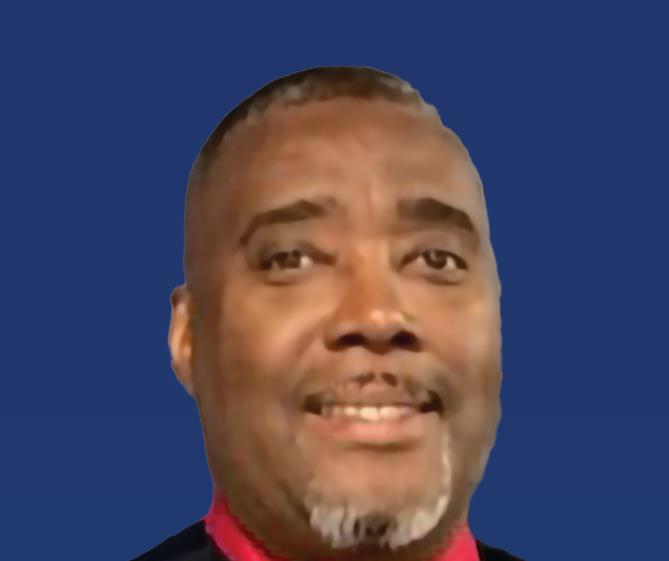


EDDIE HALL: Artificial Intelligence (AI) on gaming is providing innovations to Tribal gaming now. AI integration can impact cybersecurity, surveillance, casino back-office operations, marketing and customer-facing engagement.


How can the customer experience be improved with AI


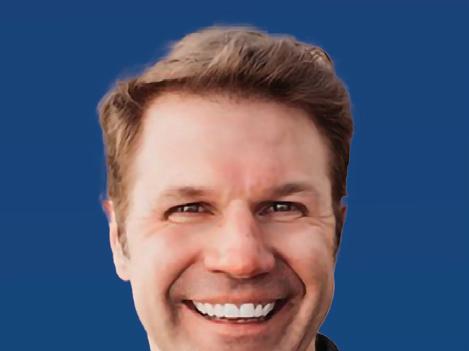





STEVE BRIGHT: The best sort of enhancements to a customer’s experience that AI can provide are the ones that look like they were crafted and curated by hand. Ideally, the player does not need or want to know about the tens of thousands of lines of code behind the scenes, everything just works. In the gaming industry, this can mean things like giving players offers that are more in line with what they have shown by their behavior to be what they are truly interested in, such as the right events and right gifts. It also means rewarding players at levels they feel good about. At OPTX, we also use AI to help casinos inform their slot floor (and soon table game) content. This means having the right mix and number of the most popular games, so that players can always find what they are looking for, and operators can make the optimal use of limited space and resources.

























PAOLO PERSONENI: Artificial Intelligence is instrumental in delivering personalized sports betting experiences to individual customers. The application of AI-driven personalisation tools allows operators to serve customers with content that is tailored to individual interests and preferences based on their betting history. This is delivered on a granular level whereby customers receive details of a particular betting market or bet type. Today, Sportradar’s AI-driven personalisation capabilities allow clients to engineer a front-end experience for individual customers, displaying content that is relevant to them and reflective of their betting history. This creates an immersive experience for bettors and builds a 1-to-1 relationship between them and the operator.























STEPHEN CRYSTAL: The adoption of AI in casinos enhances rather than replaces the human element. AI takes over repetitive tasks like data analysis and routine operations, allowing casino staff to focus on higher-level customer service roles, enhancing personal interaction and overall visitor satisfaction. This strategic allocation of roles ensures that the human touch remains integral in customer relations and service, where personal engagement and direct interaction are irreplaceable by technology.


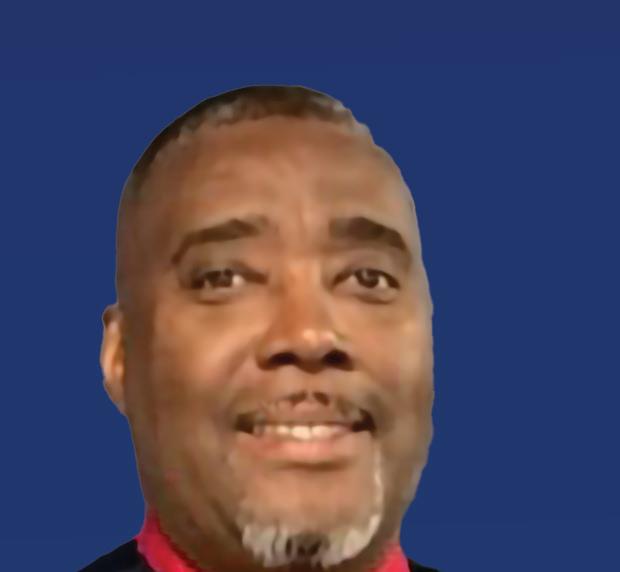


EDDIE HALL: AI uses customer data to predict gaming patterns and enhance the customer experience by managing data from behavioral patterns of guests’ previous visits. With AI capturing data, some employees can be reassigned to interact with customers in real-time.


Will the human element be lost with an increased use of AI







STEVE BRIGHT: Just the opposite, at OPTX we are finding that semimanual processes of cutting and pasting from and to different file formats, and applying what can fairly be called guesswork to make decisions, can always be replaced to some degree by applying AI and automation. This gives casino staff the time and head space to observe, evaluate and react to guests’ experiences in real time. There are always going be factors and qualitative data that our AI code base does have access to, but are readily apparent to anyone who takes the time to walk the floor, maybe a player’s favorite game was moved to noisy, cold, or even wet location. And this is not just backoffice workers that benefit, player-facing positions like casino hosts benefit as well. For example, a casino’s database may have a backlog of thousands of ‘forgotten’ players who have neither been visited nor been contacted in some time, and yet still have great potential value according to the OPTX Top Contacts Model. Our clients have generated over $1.6m in incremental revenue just by chipping away at that mountain of forgotten players, and by making a habit of following AI recommendations.




























PAOLO PERSONENI: No, I don’t’ believe so. From a Sportradar perspective, our focus is on upskilling colleagues, so they know how to use the technology to create impact for our business and our clients. AI is really powerful when it assists humans in areas which require significant amounts of resource to complete a task, such as sports data collection. Our approach is AI-assisted. We have teams working with AI to enhance their output, using the technology to generate more data or semi-automate some tasks to produce a better outcome for clients.

























STEPHEN CRYSTAL: The use of AI in the gambling industry raises several ethical issues, particularly concerning privacy, fairness and responsible gambling. The extensive data collection required for AI and ML applications can intrude on privacy if not handled correctly. Compliance with regulations such as GDPR and CCPA is crucial to ensuring that player data is used ethically and transparently. Additionally, AI must be designed to promote responsible gambling, with systems in place to detect and mitigate problem gambling behaviors using AI-driven monitoring and intervention tools. Ensuring fairness also remains a critical concern, as AI systems must be transparent and free from biases that could unfairly influence game outcomes.


What





EDDIE HALL: There are currently some challenges with implementing any AI solution. Regulatory oversight including legal and policy frameworks are constantly evaluated as the landscape matures. If the data algorithm has biases, the employed tool may generate discriminatory responses. Data privacy and protection concerns, social and cultural implications also exist. These concerns don’t outweigh the potential value of AI, but they cannot be ignored.







do companies face in the implementation of AI




STEVE BRIGHT: A commonly voiced concern around the ethical usage in AI is that AI can reinforce existing biases and discrimination by being trained on datasets that are created under those same historical conditions. Since we control what data we use in training our models, we have made the decision to not include any sort of sensitive demographic data like ethnicity that is probably of very limited value for understanding and predicting player behavior anyway. Another concern is data privacy. We don’t use any sort of Personally Identifiable Information (PII) in any of our models. The idea is that the model can’t form biases around data that it does not have in the first place. Also, we use a cloud provider (MSFT Azure) that applies rigorous controls and processes around cybersecurity, and we spend a great deal of our time and energy thinking about data security best practices.
































PAOLO PERSONENI: The biggest challenge for operators is having access to high-quality data – that’s fundamental to any AI initiative. Without data, operators can’t feed the algorithms, which ultimately means they won’t get anything meaningful out of the process. The diversity of that data is equally important. The golden rule is typically that the amount of data required, and the timeliness (real time data makes a difference more often than not) of that data, is more than 10 times the number of parameters included in the algorithm. In sports betting, where the models need to account for an extremely high volume of factors, acquiring enough high-quality data is exceedingly difficult. Even for operators who have a sufficient internal database, they may still lack the variety necessary to cover the entire market in the same way a global provider can. And in many cases internal information would not be enough. Sometimes operators just face issues in acquiring, processing and storing information because of technical limitations presented by legacy technology.




STEPHEN CRYSTAL: The future of AI in the gambling industry promises revolutionary changes, with new levels of game personalization, risk management and customer engagement. We expect to see more sophisticated AI-driven games and enhanced personalization that tailors the gaming experience to individual preferences. Innovations in AI will also improve security measures, such as advanced biometric authentication and fraud detection systems, making online platforms and casinos safer. Moreover, AI’s ability to provide comprehensive real-time data analysis will continue to refine risk management and oddsmaking, ensuring more accurate and dynamic betting options. As AI and ML technologies evolve, their integration into casino gaming operations and online platforms will likely be accompanied by updated regulations, and ethical guidelines to address the challenges and maximize the benefits of these advancements.



EDDIE HALL: As Tribal gaming pursues AI’s newest applications, they will be delving into a dynamic gaming landscape. Capitalizing on AI can bring an extraordinary Tribal gaming experience.

What's next for AI and the gamingandindustry the




STEVE BRIGHT: Increased adoption of AI-rich products like OPTX and increased automation in all aspects of gaming operations. It’s easy to imagine a nearfuture in which processes like campaign creation and implementation are both automated and optimized by AI. I think any business function in gaming or hospitality that involves a person interacting with a computer, instead of with another person, can probably be made more efficient with AI or maybe even completely automated. In the gaming business, AI is about making computers do the things computers are good at, like chewing through vast amounts of data and making recommendations, and letting people do the things people are good at, like managing relationships with your guests, and creatively curating the guest experience.



PAOLO PERSONENI: We’ve already touched on the AI technology operators need to create a 1-to-1 betting experience for their customers, and we’re providing our clients with the integrations they requite to deliver a personalised front-end betting experience to each individual customer. Using AI to engineer a 1-to-1 betting experience across an entire betting website is a longer play, with a complete User Interface (UI) overhaul required. Today’s betting websites are similar in look and feel, so operators wanting to modernise their UI will need to be bold and look outside of the betting industry for inspiration. For example, social media and gaming platforms deliver a personalised user interface that can result in deeper engagement. We’re seeing some non-traditional UI integrations take place, with swipe functionality, so popular on dating applications, incorporated by a handful of operators to make the process of choosing a bet more straightforward for customers.


CEO Ben Sutherland discusses the past, present and future of supplier Greentube US.
In an exclusive interview with Gaming America , Greentube US CEO Ben Sutherland discusses what to expect over the course of the next year, alongside how to navigate the rapidly evolving US landscape and the biggest Stateside developments in iGaming.
You’ve received licensing for Pennsylvania and Connecticut recently; what developments can we expect in those markets from Greentube US in 2024? Getting your license is just one of many steps in getting games live in a state. Often, there are customizations on the server level or even the individual game level to tailor the experience to
what you think the player wants or the regulatory body needs. But, even with those changes, our first batches of games should go live in CT this quarter followed shortly behind by PA. Based on gaming trends in these states and the sizable appetite local players have for our style of games, we expect great success in these regions.
You had an iLottery endeavor with Drop the Ball last year; are there any additional iLottery releases on the horizon?
We have a lot in our iLottery roadmap, with more releases planned for this year. These are both new states, as well as new games in some of the states we
are already in. A few of the games are being produced simultaneously for iGaming and iLottery launches, so that will be very exciting as well, to be able to compare performance in real time.
What do you think may be the biggest revolutionary developments in iGaming, and how can Greentube customers expect to see those things manifest in your products?
There are a number of exciting mechanics right now, but an often overlooked revolutionary development comes in the tool set, and to this, Greentube has long been developing a replacement game engine and server

structure. Our first games in this new framework are due to be completed this quarter. There are far too many features to list as to why this is exciting from the production point of view; so many of the best practices in mobile development have been incorporated into the new workflow. From the operator’s point of view, the ease of deployment, bonusing, marketing campaigns and reporting is exciting. From the players’ point of view, they should notice a significant improvement in the quality bar of our games. For example, our compression is better so games can have more content but still be the same or less download time. Our animation tools are better, our sound designers have new features to work with, etc... We could have a whole article on this new development tool kit.
I’ve seen that recently you’ve been working on combining popular games and gaming features (such as Diamond Link: Mighty Seven Ways to Win). Is that something we can expect to see more of?
Yes, actually! For us, a balanced game portfolio is a mix of classic mechanics, new innovation and remixes of what worked in
previous games to something even better. The game you mention is exactly that latter category, where we merge what is already working in two separately successful game types into one great new hit.
Your first ever game, ‘Ski Challenge,’ surpassed 20 million races in November, how much does that game mean to Greentube? Since the official re-launch a year ago,
 BEN SUTHERLAND Greentube US CEO
BEN SUTHERLAND Greentube US CEO
we have seen 20 million races and 600,000 downloads. Ski Challenge is an indivisible piece of Greentube – the first ever published game and it dates to 1998. Moreover, alpine skiing is the number one sport in Austria. On top of everything, the game was developed in cooperation with the three most successful ski associations in the world, the Austrian ÖSV, Swiss-Ski and Deutscher Skiverband, which underlines its authenticity. It is perhaps not in the key area of our business interest in this region but is and always will be an important part of the heritage of Greentube.
With markets varying dramatically from state-to-state, not only regarding regulation, but also demand – how do you navigate the landscape as it evolves so quickly?
This really speaks back to making sure the portfolio is balanced. Not every title is going to see equal success in every region it gets released in. It is quite shocking the performance differences a game can have from country to country, state to state or even operator to operator. Thankfully, being part of the larger Greentube family means we have all sorts of product types being produced as each of the different studios bring their own flavor.
The next-generation game management system! Galaxy Operating System (GOS) is a cutting-edge platform revolutionizing the gaming experience that features innovative progressive jackpot options, striking LED sensors and first-of-its-kind digital tracking managed by an intuitive dealer pad. GOS sets a new standard in gaming technology. With the highest level of customization, GOS caters to operator needs, offering features like Dynamic Progressive ™ and



multi-round tracking on roulette and craps games. GOS can seamlessly run multiple jackpots on a wide range of table games, offering a variety of multi-game, tier and denomination progressive options. With the flexibility of accommodating single, dual or triple progressive sensor bet spots, bets are instantly registered as chips and placed to ensure smooth gameplay.
Digital tracking has never been easier, with GOS supporting digital tracking for Galaxy’s Roulette Up™ Progressive, Make’em All Progressive and the Two-Way






Dice Progressive. The excitement doesn’t stop there. Powered by GOS, Dynamic Progressive is the hottest way to elevate your win total. Each round, a random number of hands are selected, and their pay will be dynamically multiplied, up to 10x, electrifying the player experience!
GOS showcases Galaxy Gaming’s commitment to forward-thinking innovation, paving the way for the future of gaming technology. Elevate your gaming experience with GOS, where innovation meets excitement.



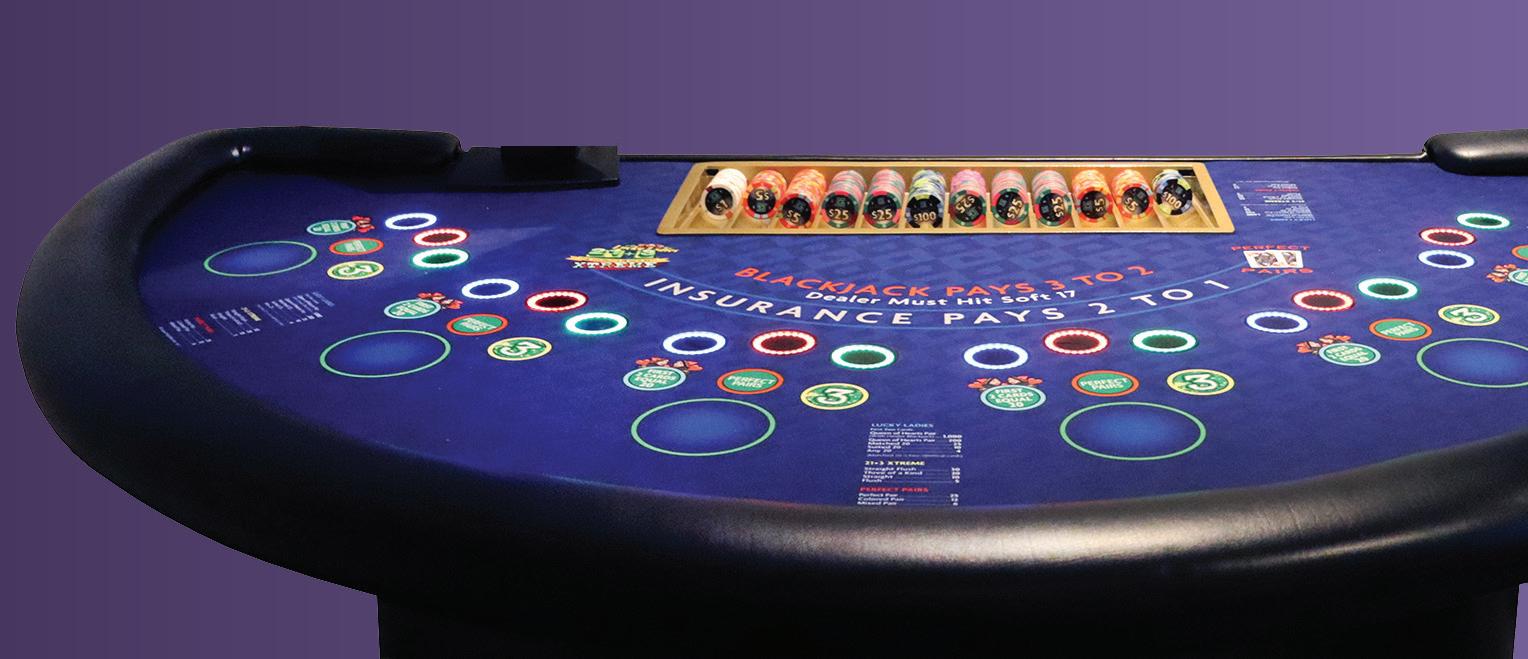
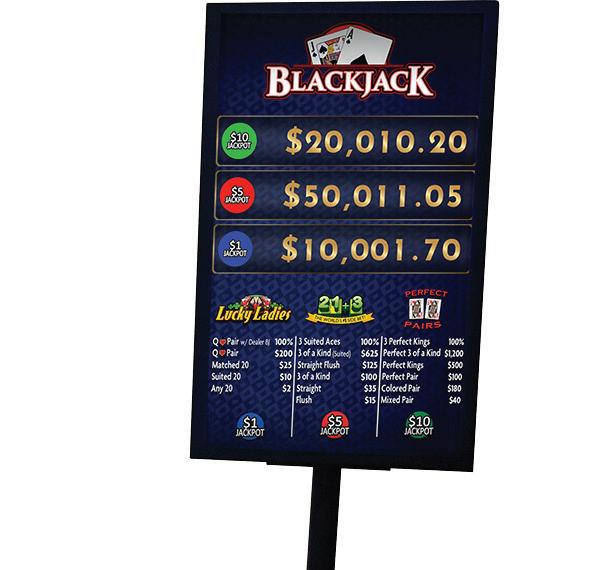

The Tiger & Dragon MLP is available in two unique base games, Multiplier and Cash On Reels™, complete with stunning graphics and state-of-the-art sound. Both themes feature three unique bonuses, the Tiger bonus, the Dragon bonus and the combined Tiger & Dragon bonus, which are triggered by landing the namesake symbols or filling up the collection chests above the reels during the base game.
The Tiger bonus is played on a 3x5 reel matrix, while the Dragon and Tiger & Dragon bonuses advance the reels to an expanded 8x5 reel matrix for an immersive experience. In addition to the high bonus frequency, the Tiger & Dragon game brings popular functionalities to the next level with its new-to market lock, respin and reveal bonus system along with moneyball symbols with credit values that can combine through a unique betup structure for high-energy gameplay and big win potential.
“Following in the footsteps of our premium MLP themes Prosperity Link and Mystery of the Lamp, Tiger & Dragon leverages new and innovative base game themes elevated with compelling bonus opportunities,” said Dubravka Burda, IGT SVP Global Studios.
“The unique combination of stunning graphics and strong math in Tiger & Dragon is proving to be successful in initial deployments, and we are thrilled to continue deploying the game on the proven Peak
Curve49 cabinet with attractive impressive merchandising. We look forward to seeing the product captivate players in casinos around the world.”
IGT’s new games Tiger & Dragon Cash on Reels and Tiger & Dragon Multiplier leverage new and innovative base game themes with entertaining rich lock and
respin bonuses. The combination of stunning art and very strong, unique math, is proving successful in all casinos where the game has been placed. IGT is thrilled to add the game to its Peak Curve49 Cabinet family and is very proud seeing this product in casinos worldwide.
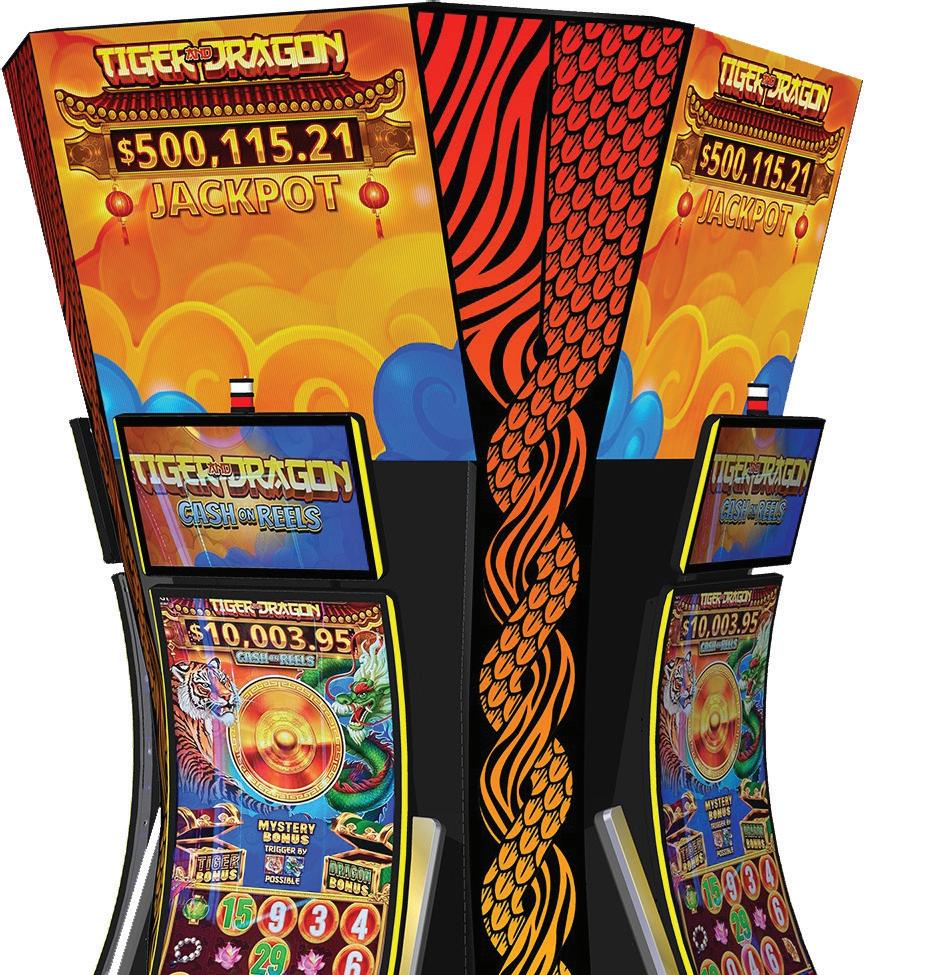
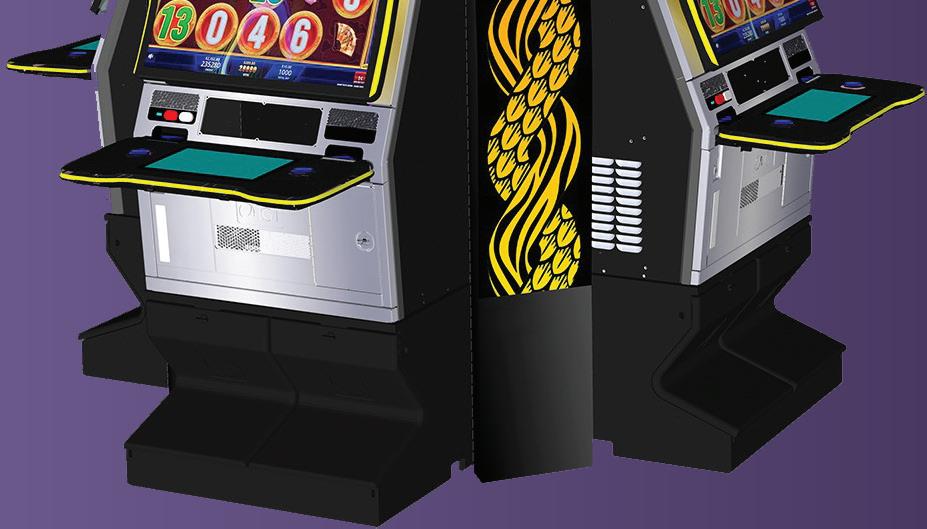
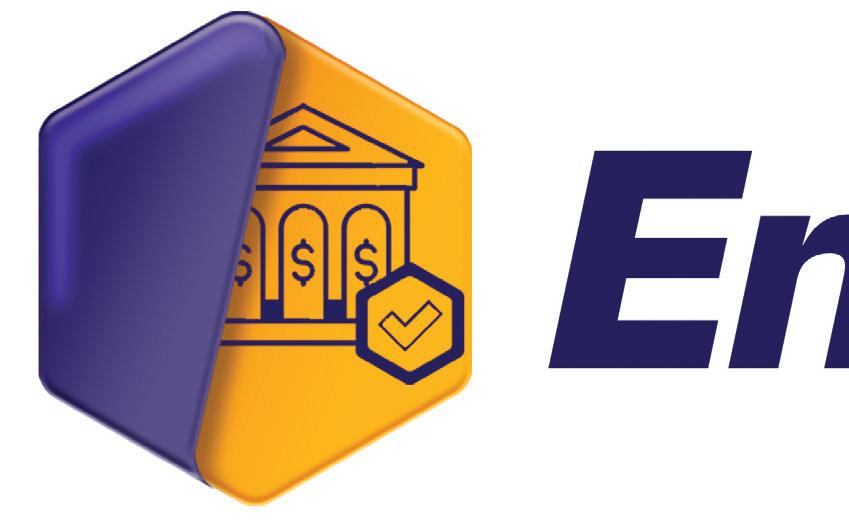
A key component of Everi’s FinTech portfolio is its RegTech solutions that help gaming operators maintain compliance with Federal and local regulatory requirements, such as AntiMoney Laundering compliance. At the center of Everi’s RegTech solutions is Everi Compliance®. With deployment

in hundreds of gaming establishments worldwide, Everi Compliance has been recognized as a premier provider of AML compliance software in the gaming industry.
As the industry has changed over the past several years, Everi has spent countless hours engaging with customers, regulators and industry

experts to understand how their needs have evolved. Everi has incorporated that feedback to further build upon the success of Everi Compliance with Entegrity™, its fourth-Generation AML Platform. Entegrity combines Everi’s decades of compliance experience with a new and modern technology stack to deliver the most advanced toolkit for AML professionals in the gaming industry.
“ AS THE INDUSTRY HAS CHANGED OVER THE PAST SEVERAL YEARS, EVERI HAS SPENT COUNTLESS HOURS ENGAGING WITH CUSTOMERS, REGULATORS AND INDUSTRY EXPERTS TO UNDERSTAND HOW THEIR NEEDS HAVE EVOLVED. EVERI HAS INCORPORATED THAT FEEDBACK TO FURTHER BUILD UPON THE SUCCESS OF EVERI COMPLIANCE WITH ENTEGRITY™, ITS FOURTHGENERATION AML PLATFORM .”
Entegrity’s web-based technology provides a reimagined, more intuitive user experience and includes a plethora of customer requested modules that are essential for AML professionals. Entegrity utilizes Everi’s broad library of connectors that automate the collection of transactional and patron data, allowing for compatibility with existing casino systems.
New features introduced with Entegrity include “Subject Manager,” which provides a comprehensive view of the patron and contains Customer Due Diligence, Enhanced Due Diligence, Source of Funds, Source of Wealth and more. The fourth-generation AML solution also includes “Incident Manager,” which provides automated incident reporting, triage and workflow management for suspicious activity. Entegrity is designed to support domestic gaming markets as well as a variety of international gaming markets.
Everi recently launched Entegrity with both Tribal and commercial operators in North America and is in the process of launching with additional domestic and international operators.


2023’s Slot of the Year at the Global Gaming Awards Americas, Jackpot Carnival is back in an all-new extreme version: Jackpot Carnival Extreme™. This thrilling new Class 3 game is both a player-selectable multi-denom game and a multi-game starring the players favorite titles Buffalo™ and Power of 88™.




Jackpot Carnival Extreme is exclusively available on the ground breaking King Max™ cabinet. The Grand SSP progressive jackpot starts at either $10,000 or $20,000 and can be linked to the original Jackpot Carnival games.


There are three fun bonuses that take the entertainment to the extreme. The new Extreme Clown Bonus is the next generation clown feature with two levels and multipliers up to 50x!



entertainment to the extreme. The new Extreme the extreme hammer symbol pushing cash on
Players can also experience the new Extreme Hammer Bonus which takes it up a notch with the extreme hammer symbol pushing cash on reels prizes up the multiplier chart 2-14 rows up to 50x. Plus, players will enjoy the Classic Buffalo free games with multipliers or Power of 88 free games with big stacks of reveal symbols.



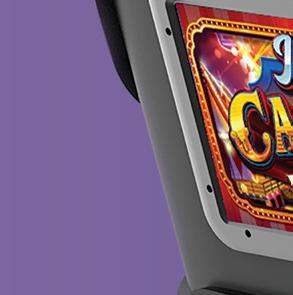


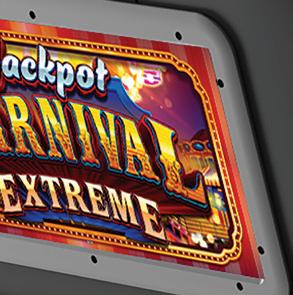




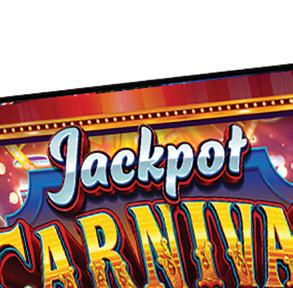
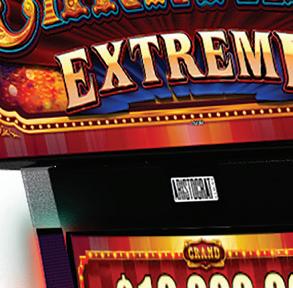

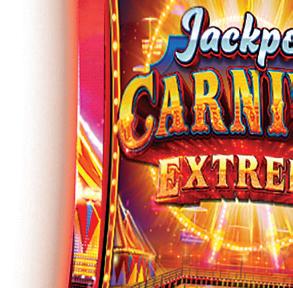











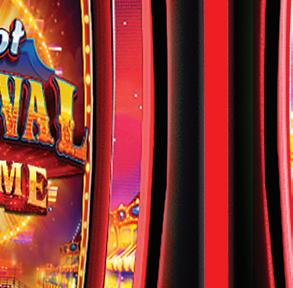


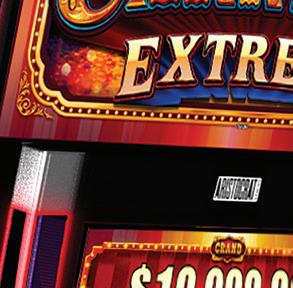

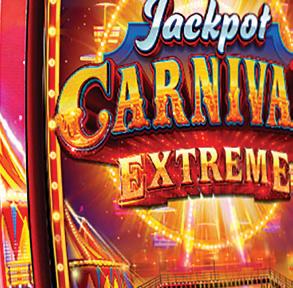
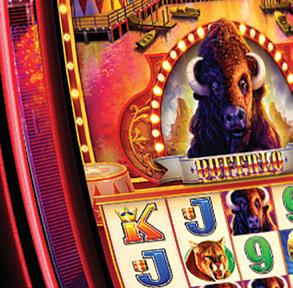











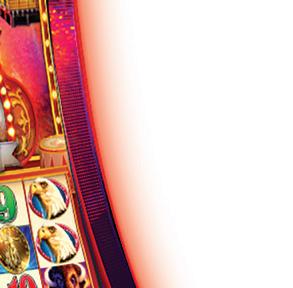










If you can land one of these, the payout can be incredible.
Buffalo Ascension, which is part of Aristocrat’s Buffalo franchise, brings the classic Buffalo features to game enthusiasts, along with added features that can pay well with the right line hits.
well with the right line hits.
However, this game is all about strategy. Are all slot machines random and pure luck when it comes to winning? Absolutely!
But with this game, going in with a plan is wise if you want to boost your odds for a profit. Because this slot’s chances for a win increase exponentially with higher credit bets; that is something to keep in mind when considering your bank roll and how much you are willing to wager. Depending on the machine, the chances to win can nearly double between minimum and maximum bets.
Also, check the machine to see if reels two through four have extra symbols that come close to a bonus at the top. Buffalo Ascension has an arrow symbol that will grow those reels to either a Stampede, Double Stampede or 8 Free Games Bonus.

We found the most lucrative bonus is the Free Games Bonus. With this one, you can often get retriggers, which keep the bonus round going and can lead to bigger wins. A player can trigger the Free Games Bonus one of two ways on Buffalo Ascension. The first is by landing three gold coins during a spin. The second is by landing an arrow symbol to reach the top of the reel, which triggers the bonus.
Once the Free Games Bonus starts, the sunset symbols can increase your win between two and five times. Players can retrigger for more free games in this bonus by getting at least two gold coins during play.
Two coins will add another five free games, and three coins will award eight more games. This feature adds to the excitement because multiple retriggers can occur in one bonus round.
Buffalo Ascension falls into the category of “big risk for big reward.” Its high volatility can lead to losses, but big bonuses can equal huge payouts.
“ BUFFALO ASCENSION FALLS INTO THE CATEGORY OF “BIG RISK FOR BIG REWARD.” ITS HIGH VOLATILITY CAN LEAD TO LOSSES, BUT BIG BONUSES CAN EQUAL HUGE PAYOUTS .”

Download our latest report “All the Ways Players Pay 2024”
